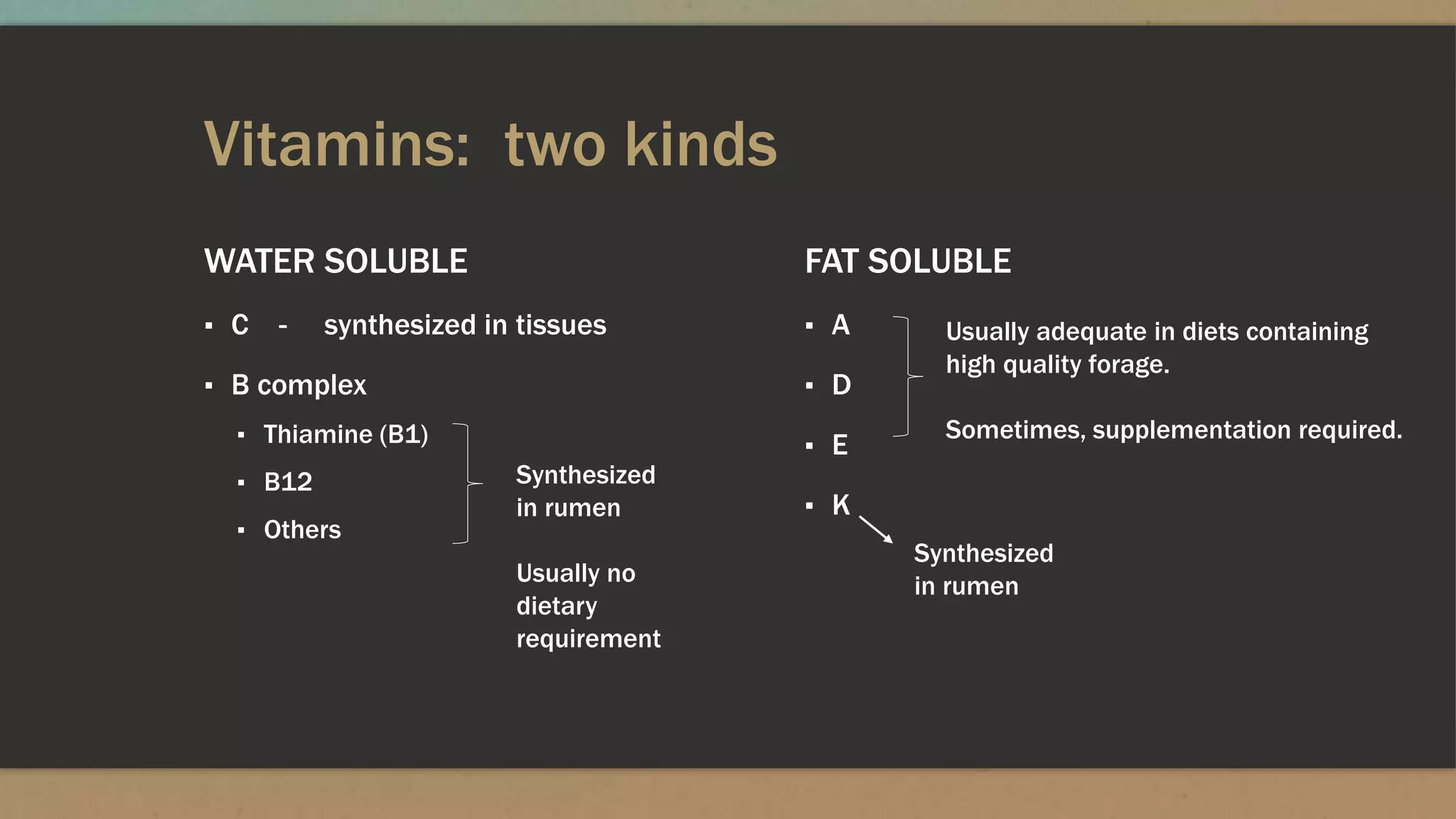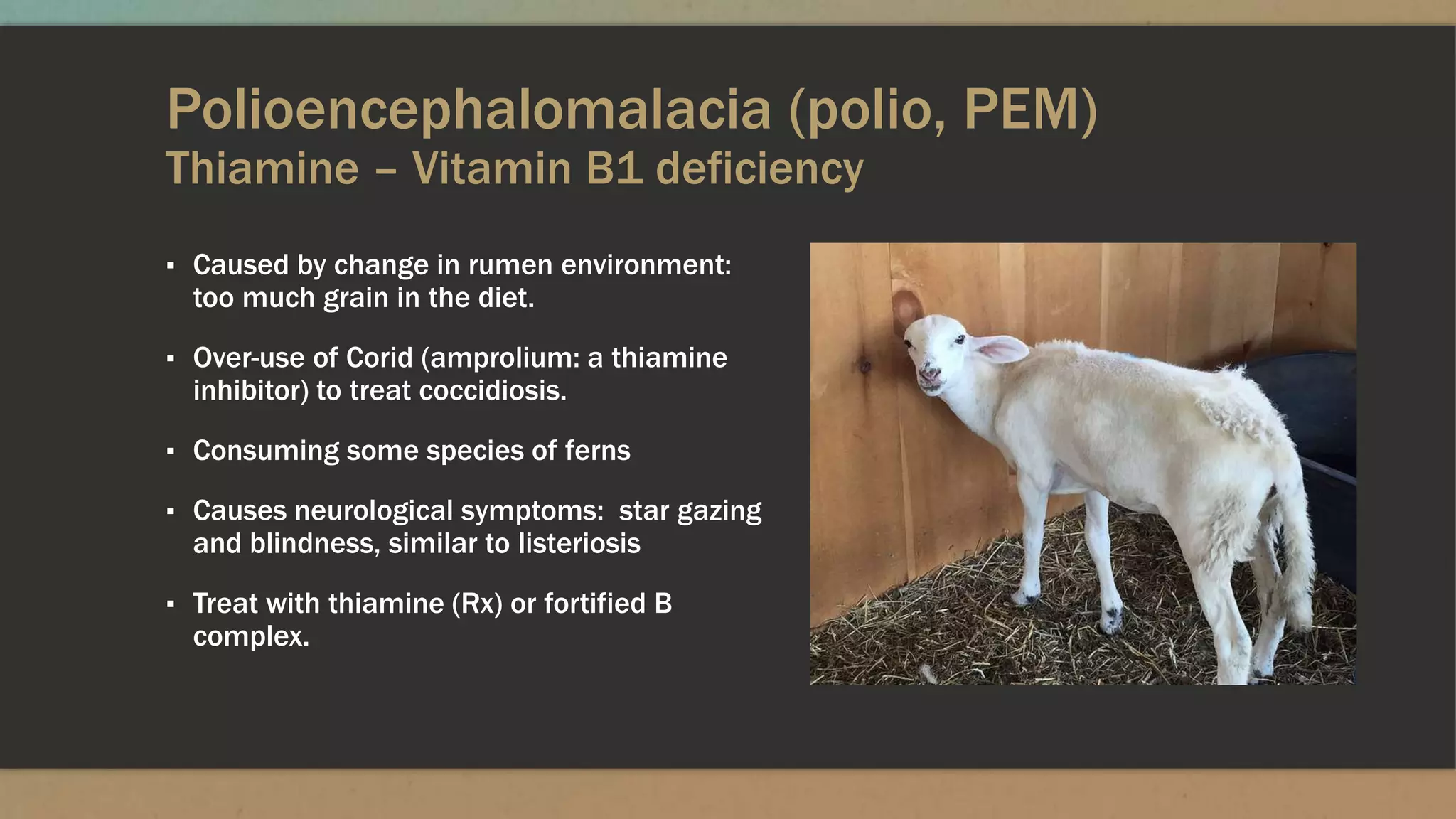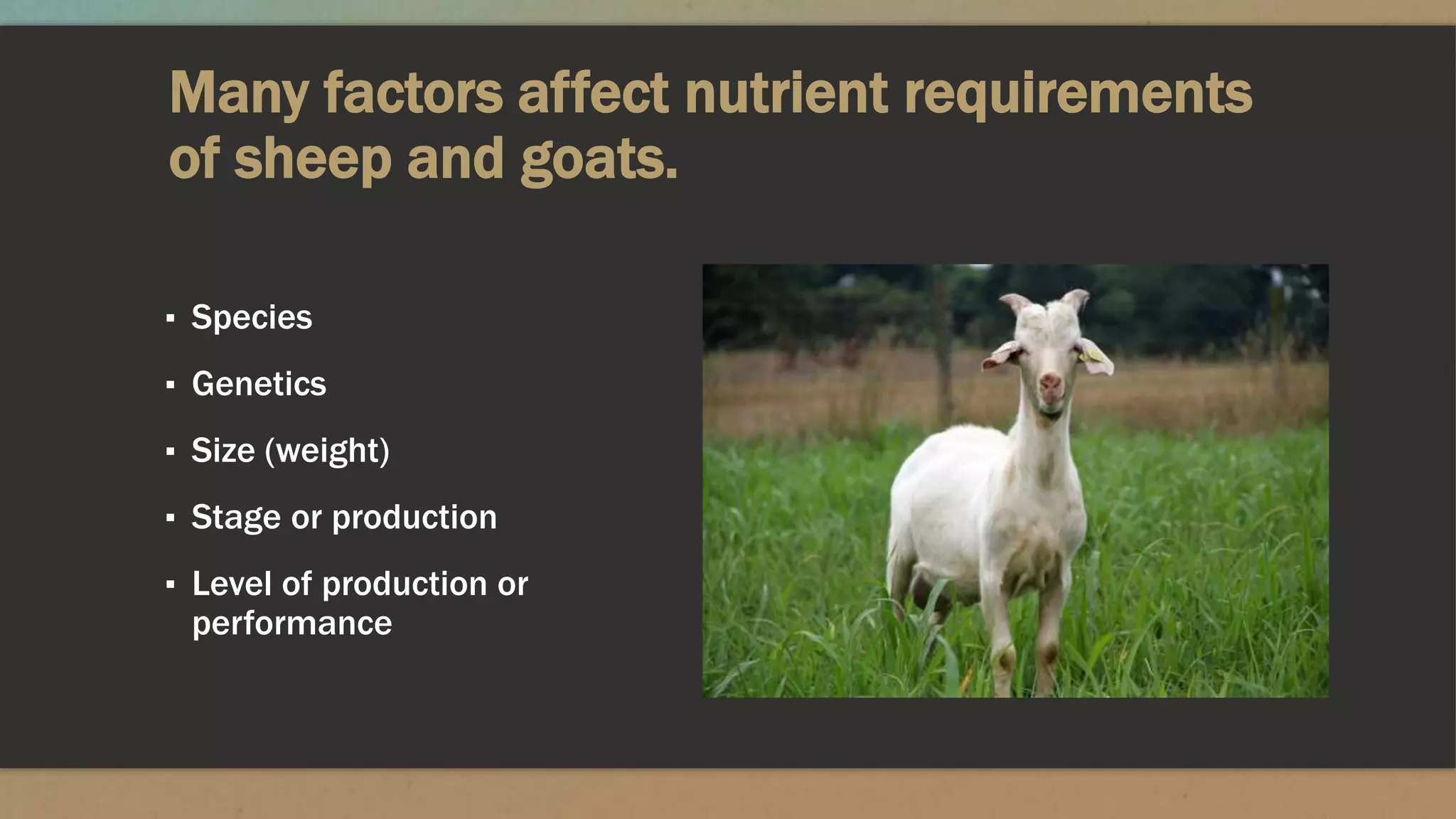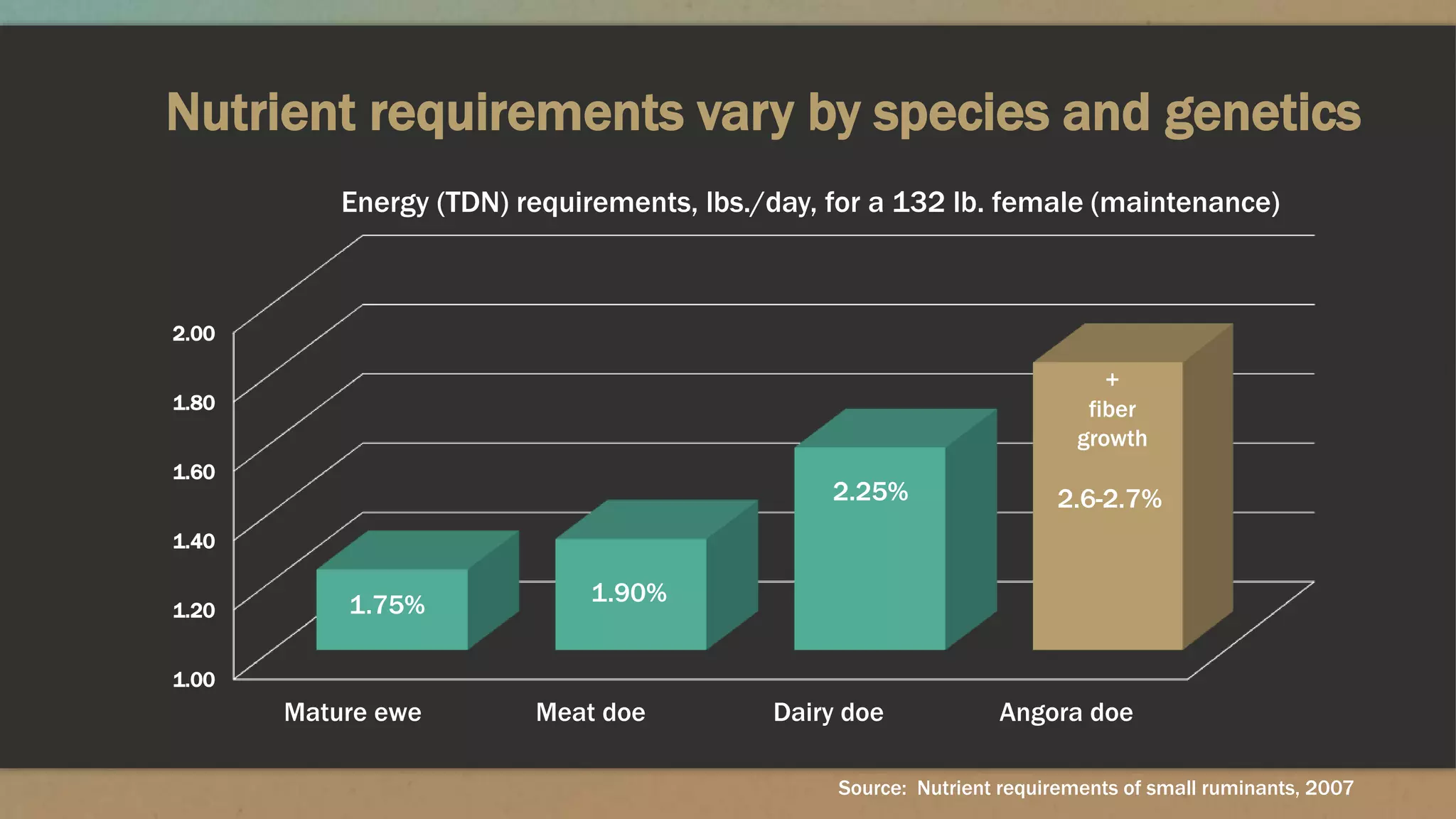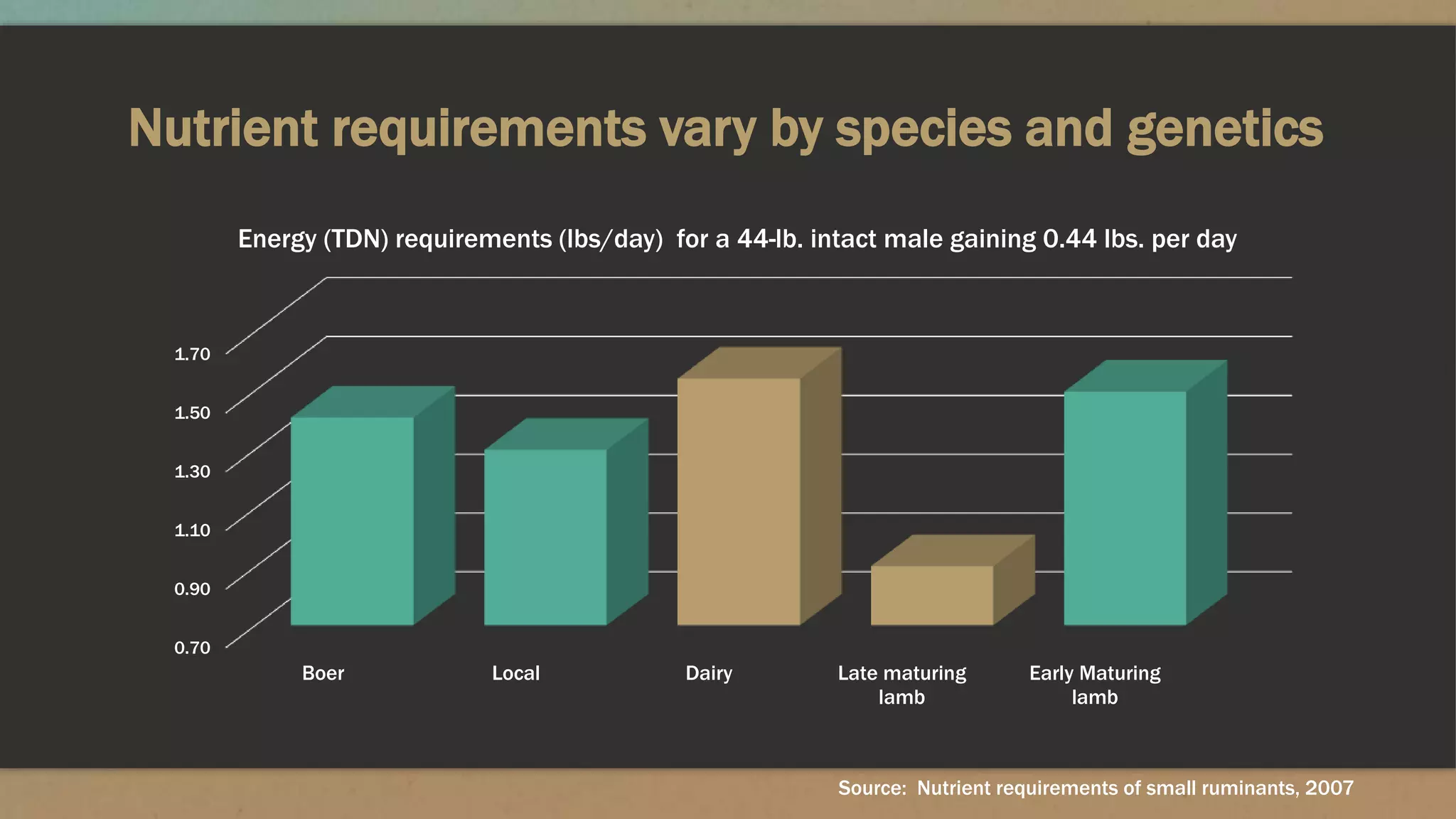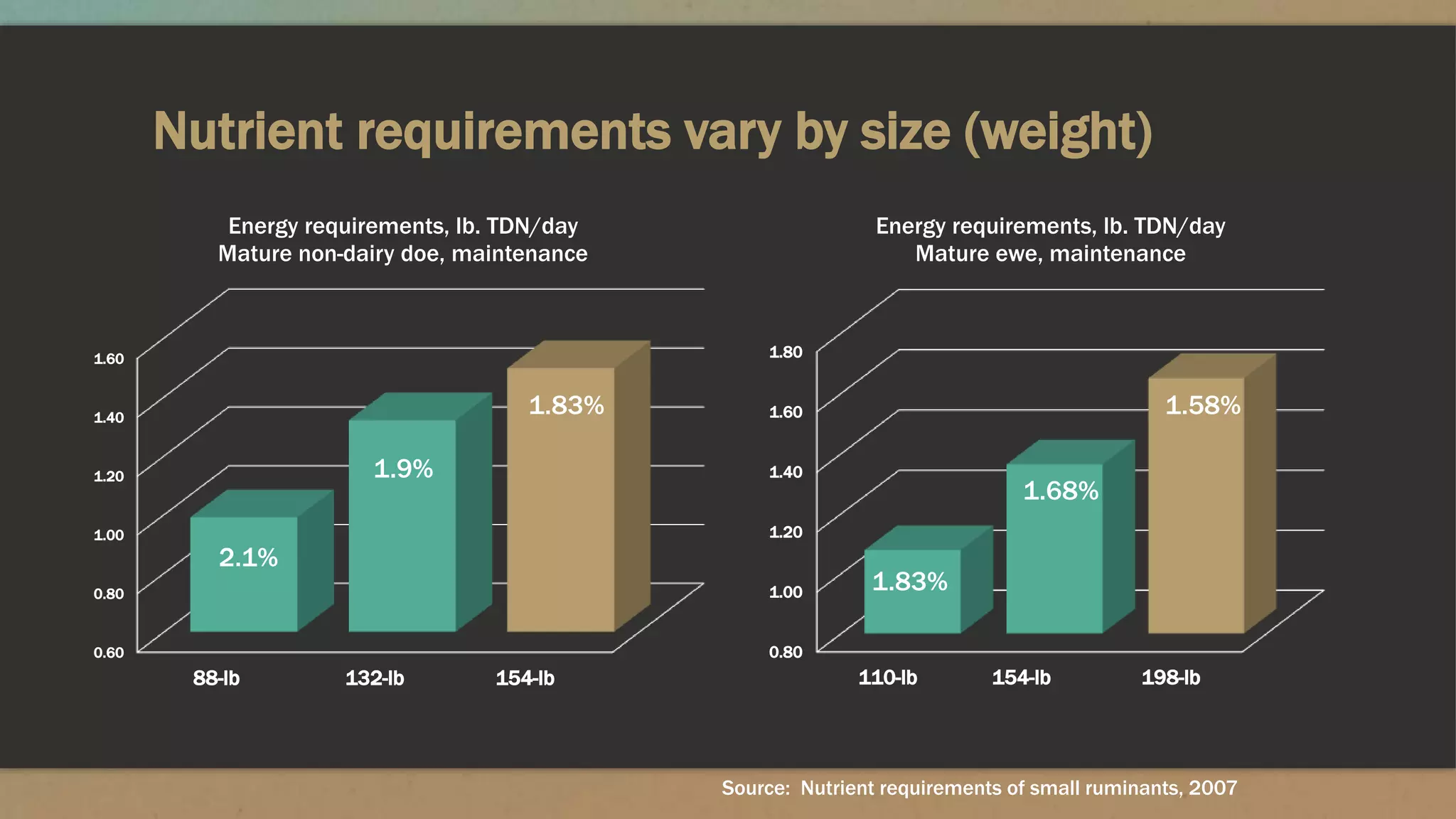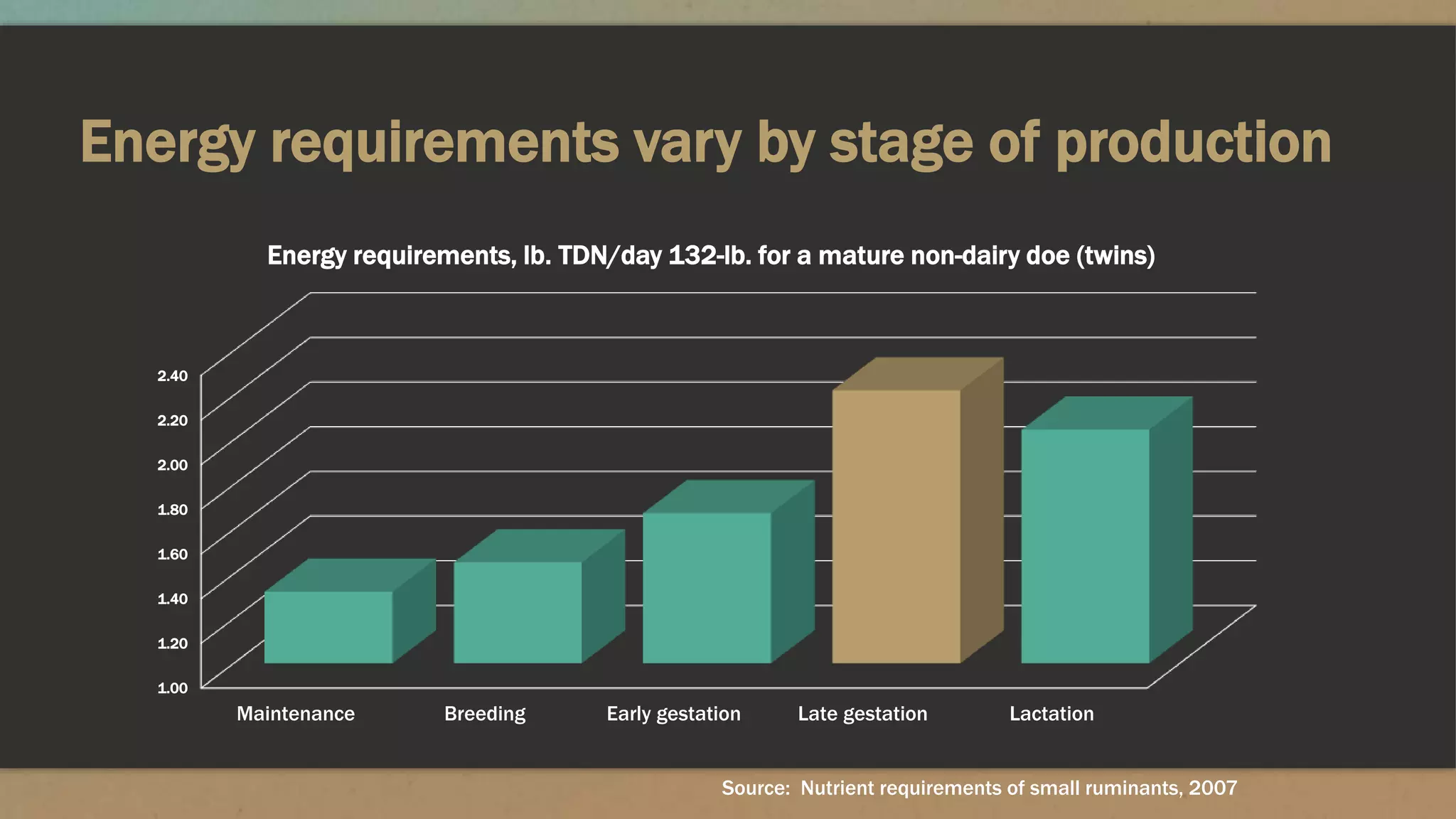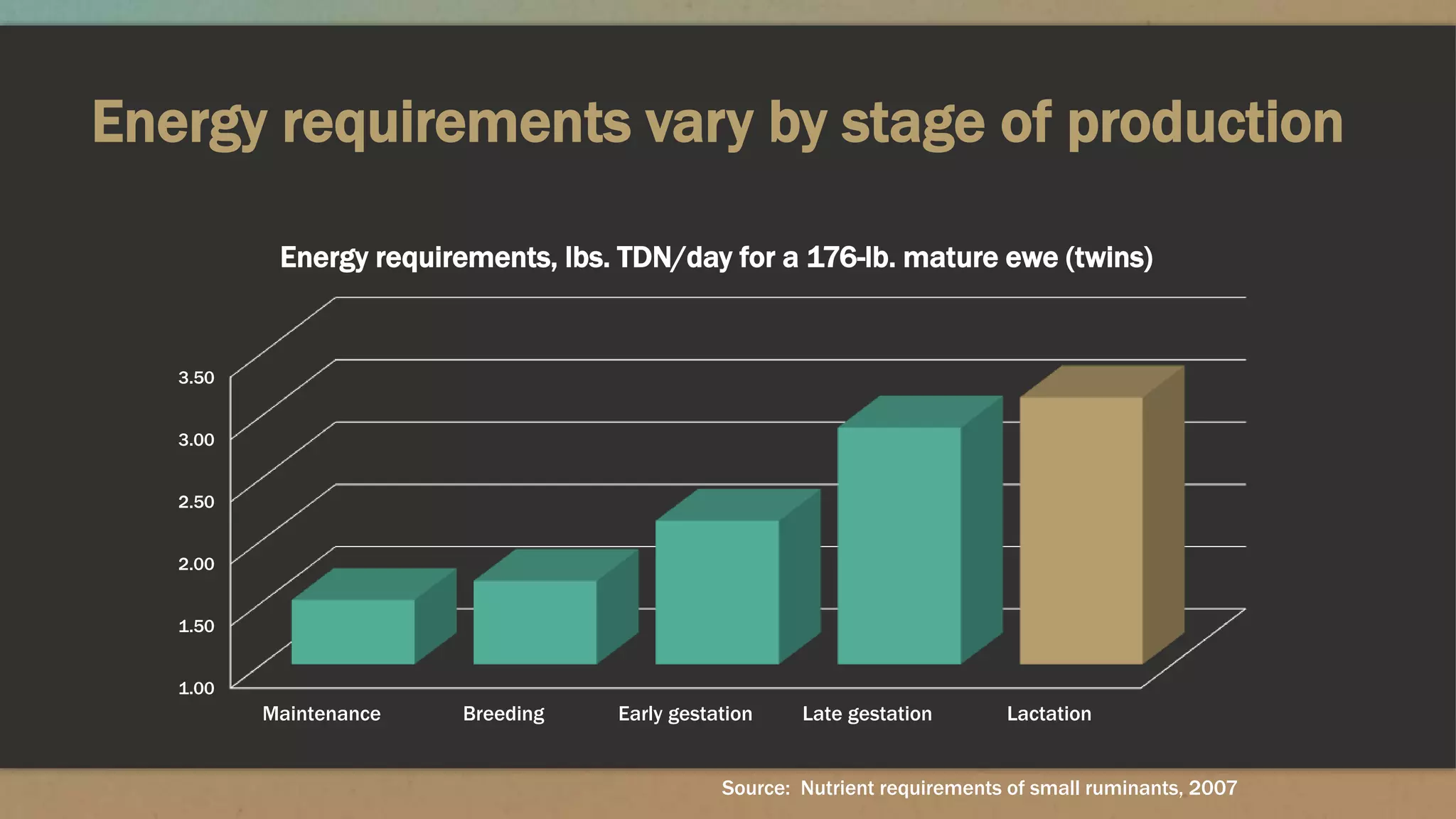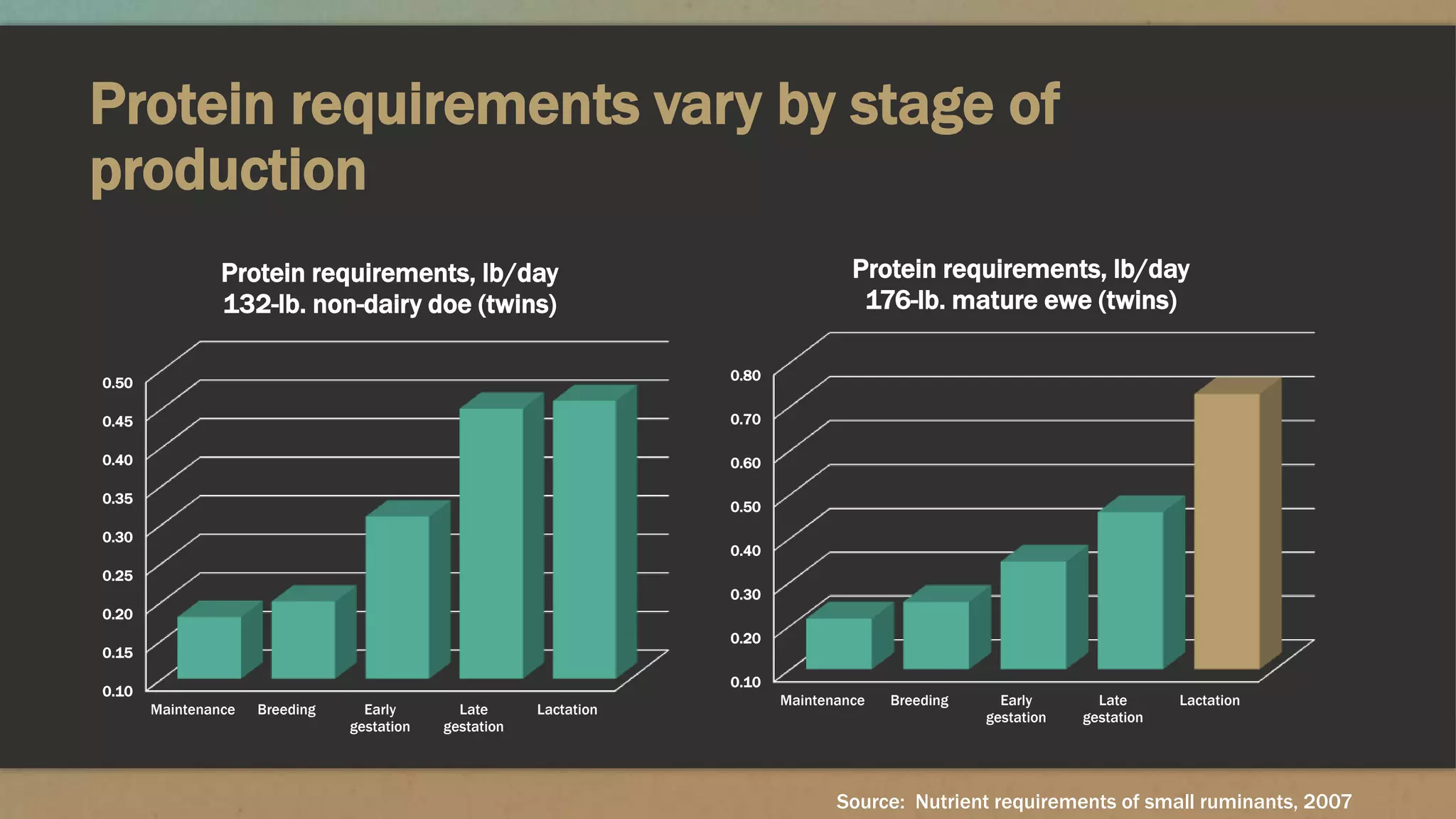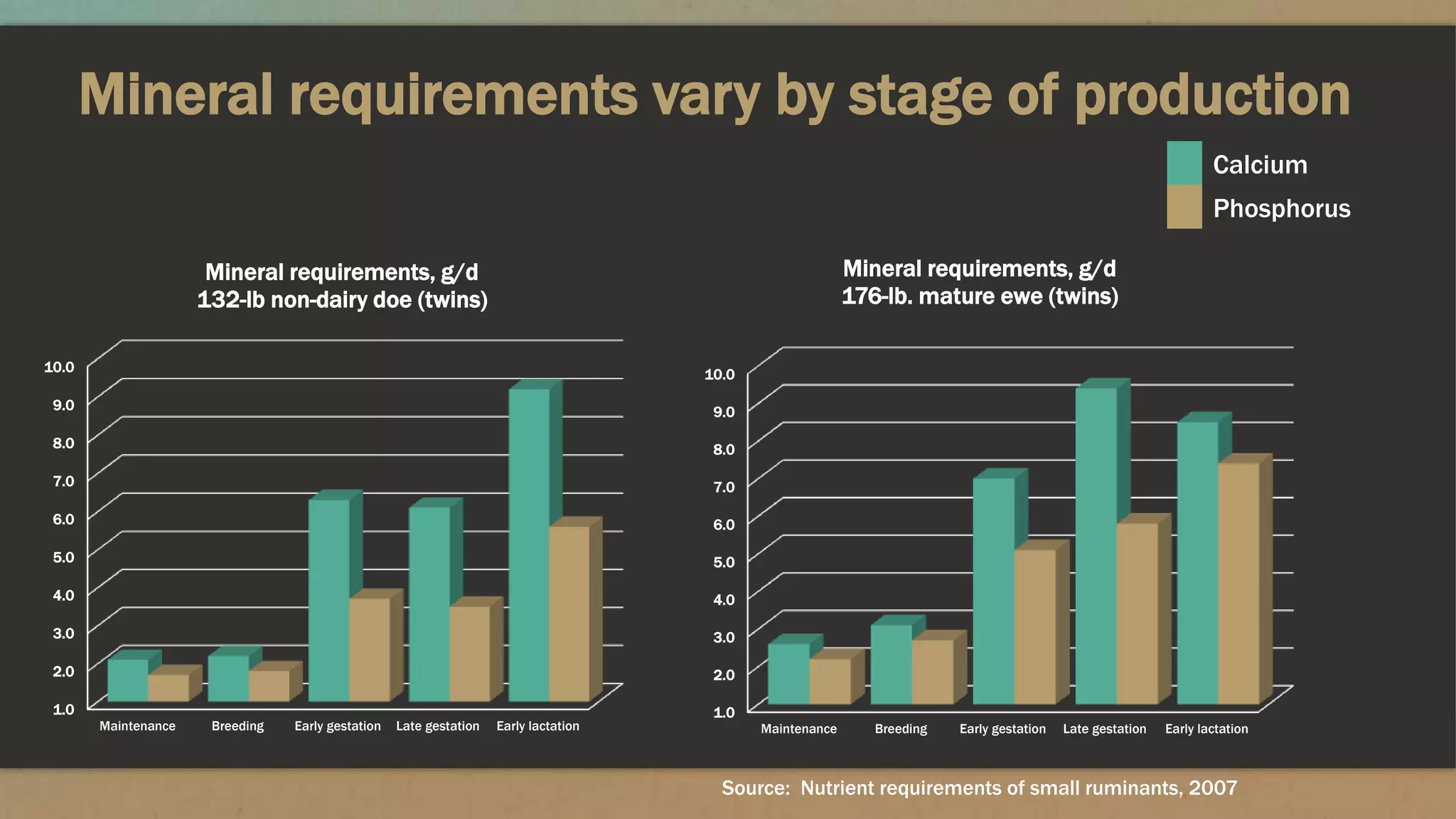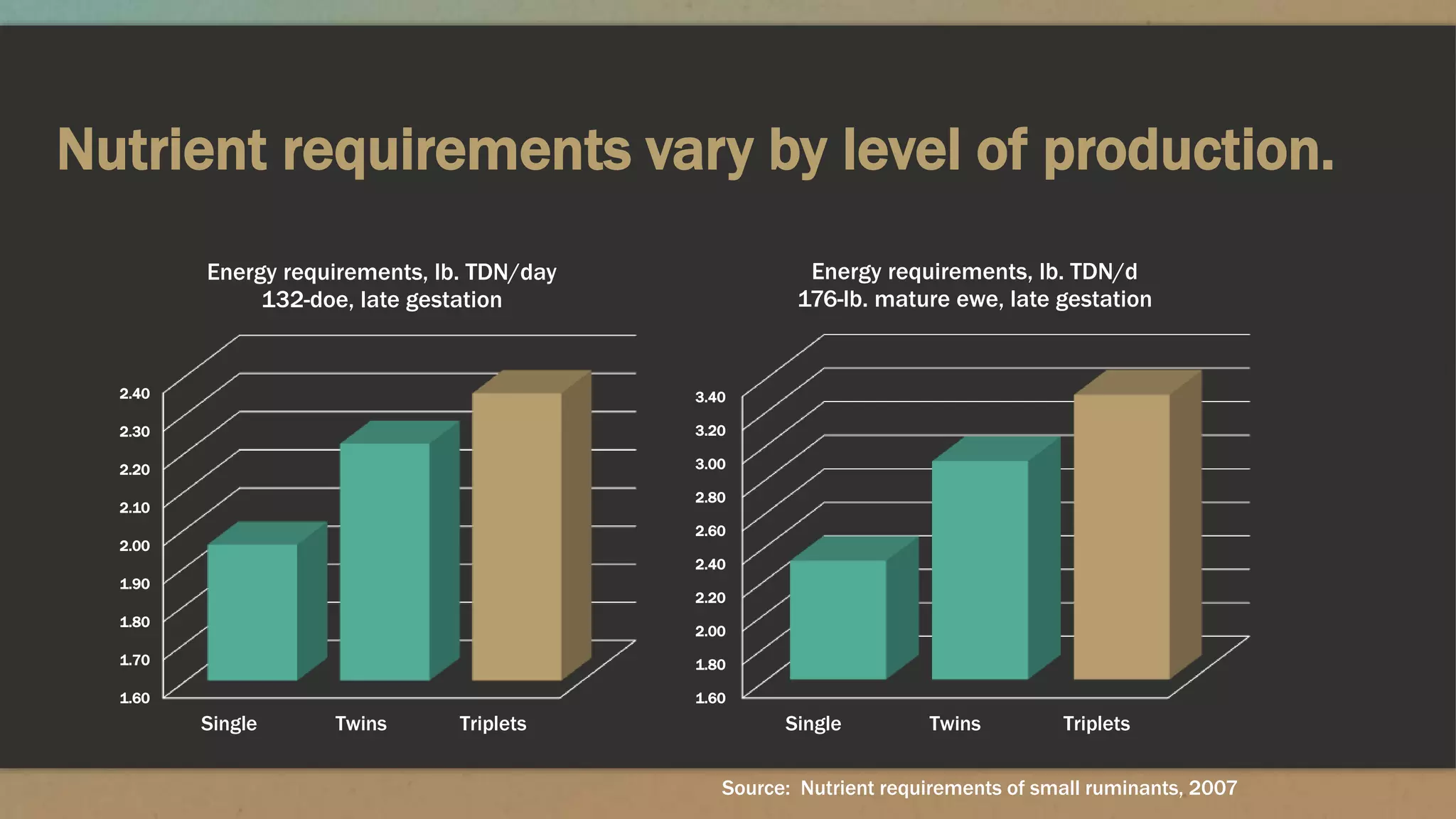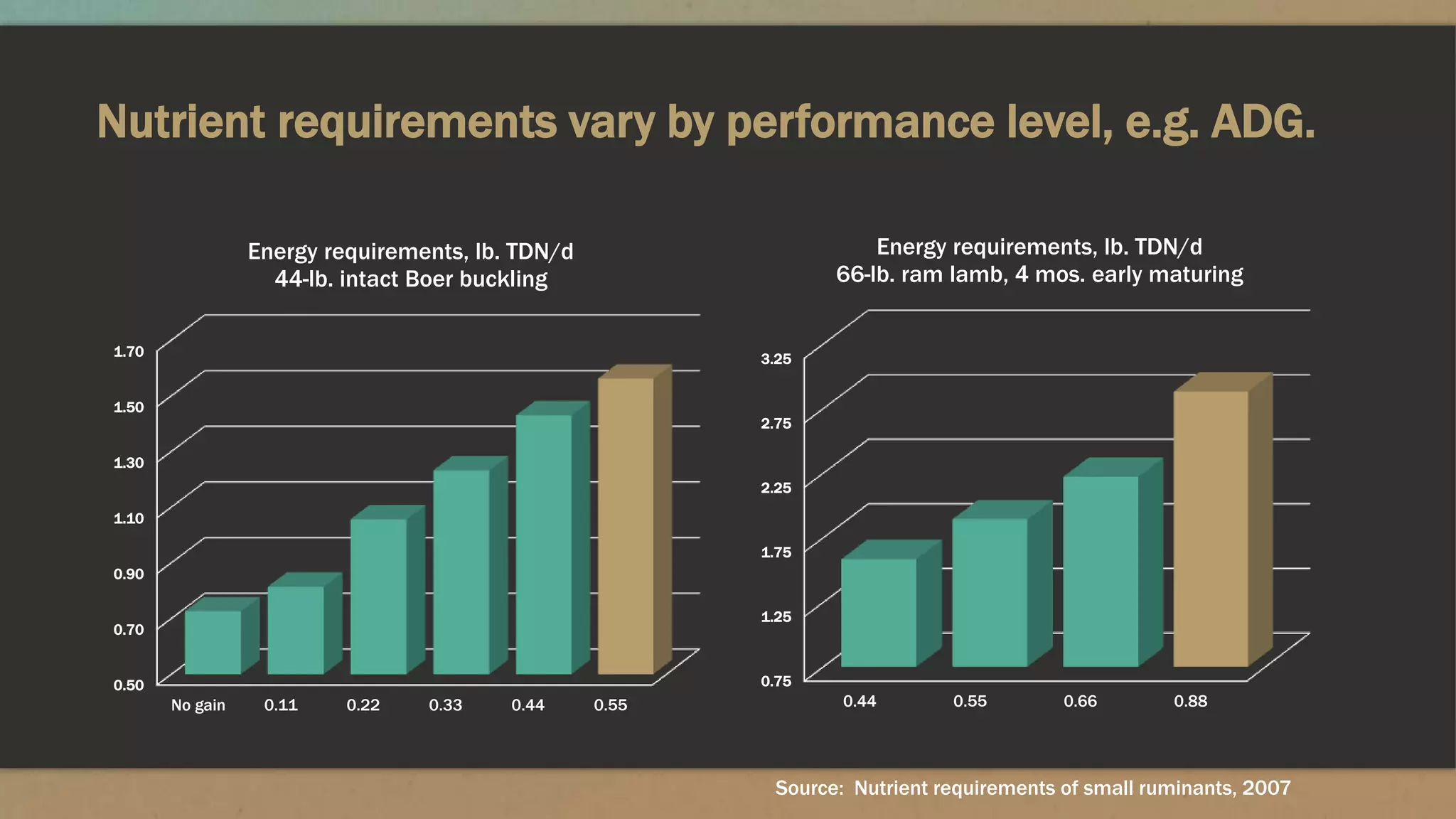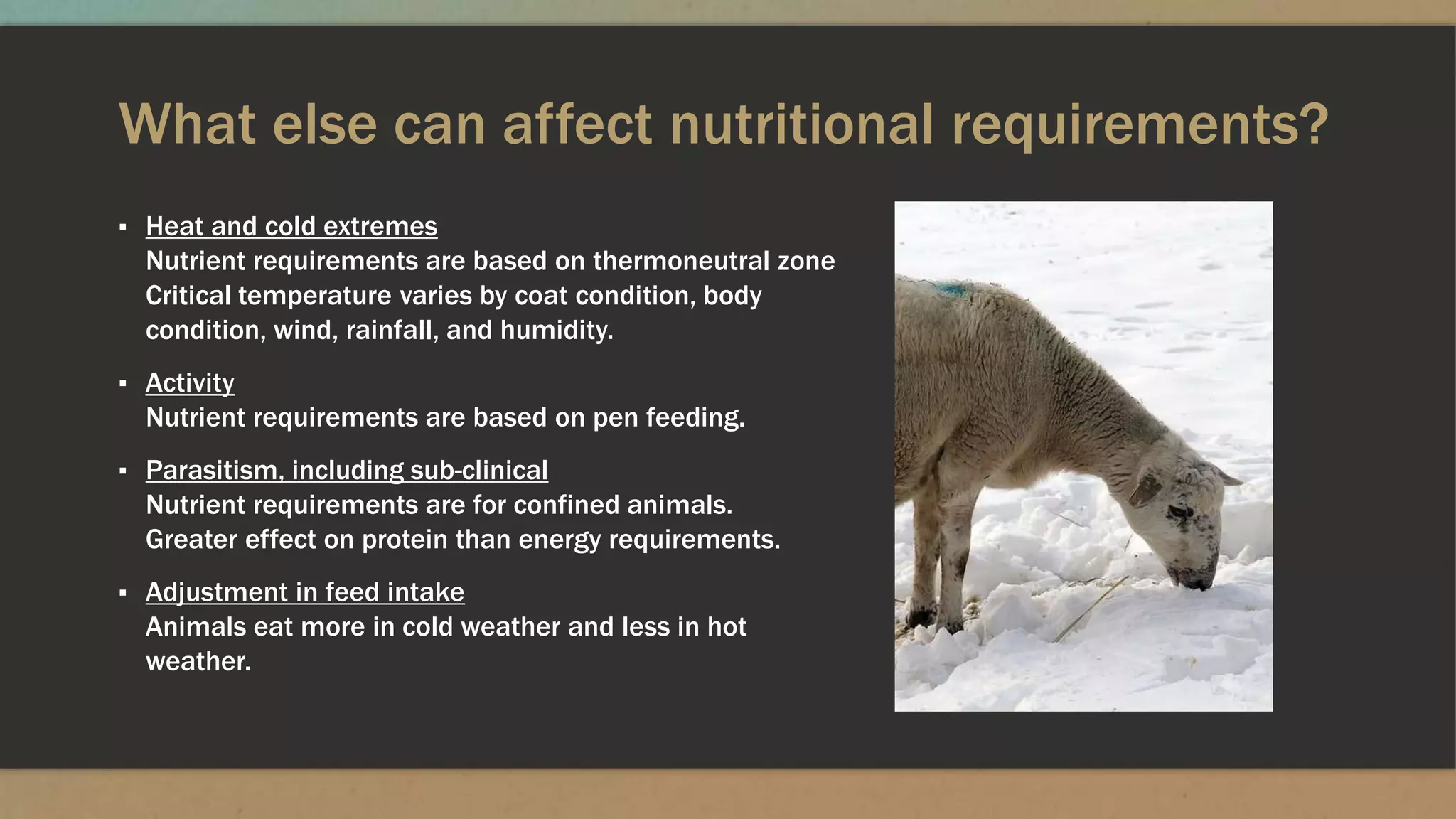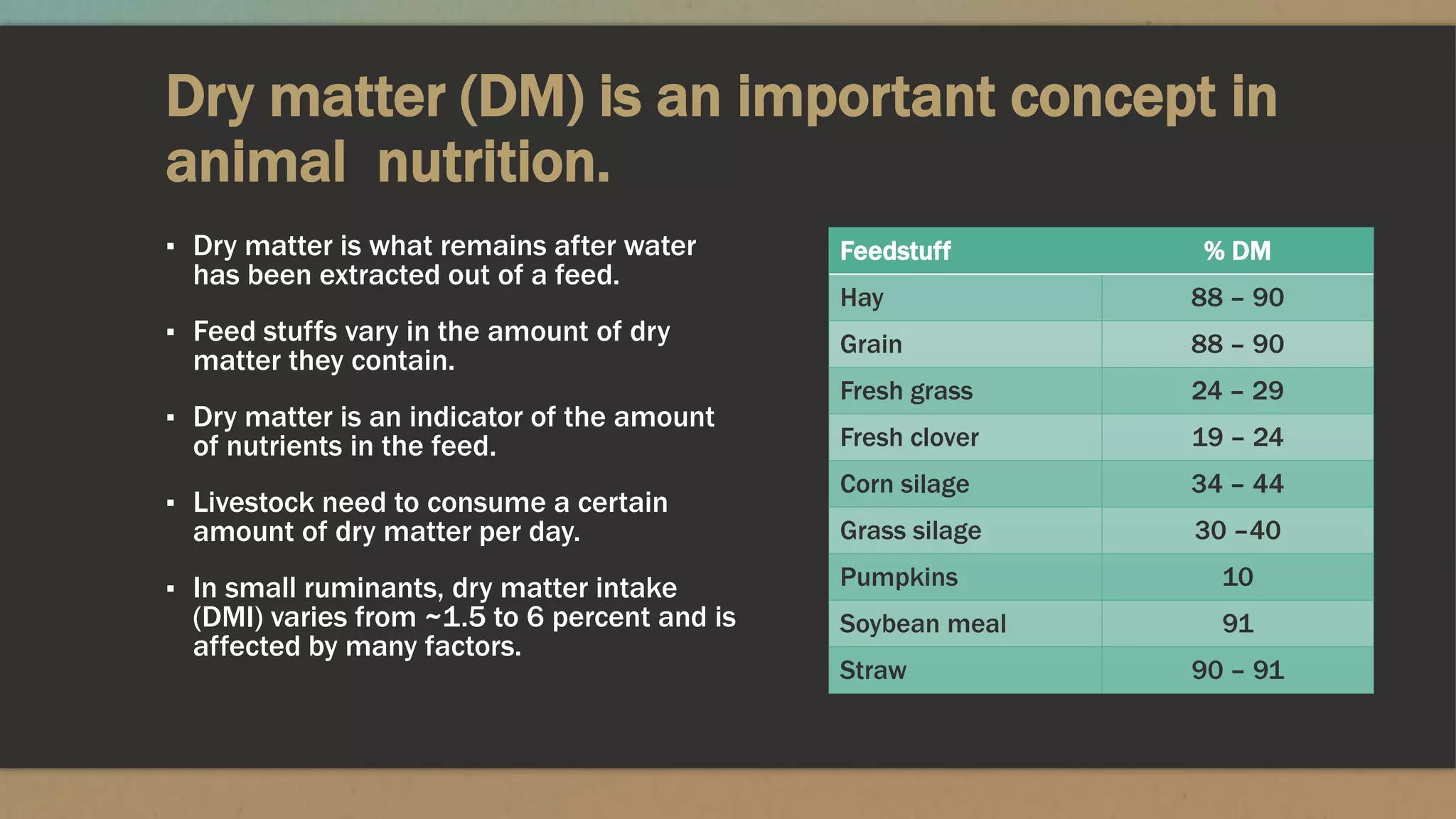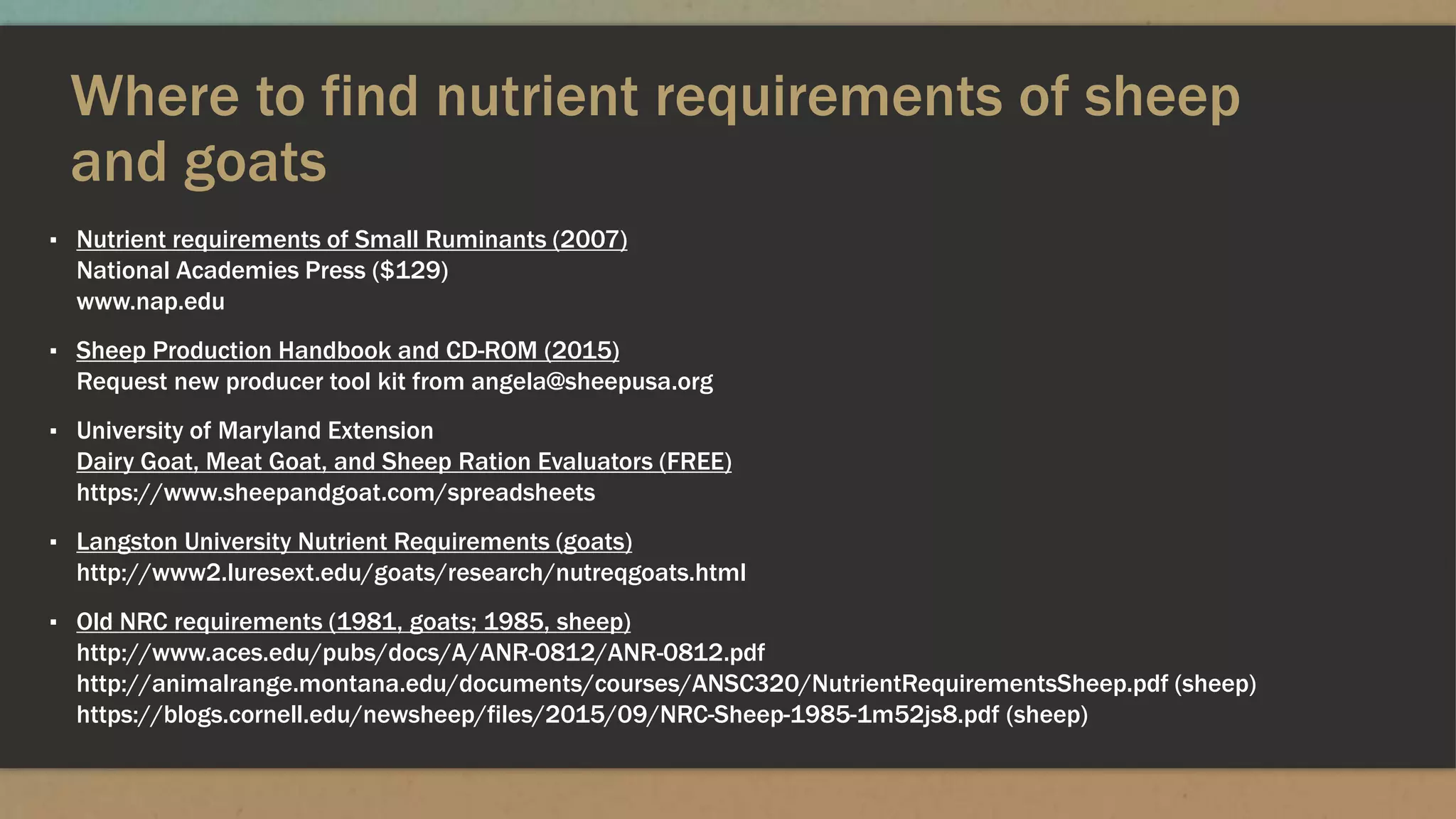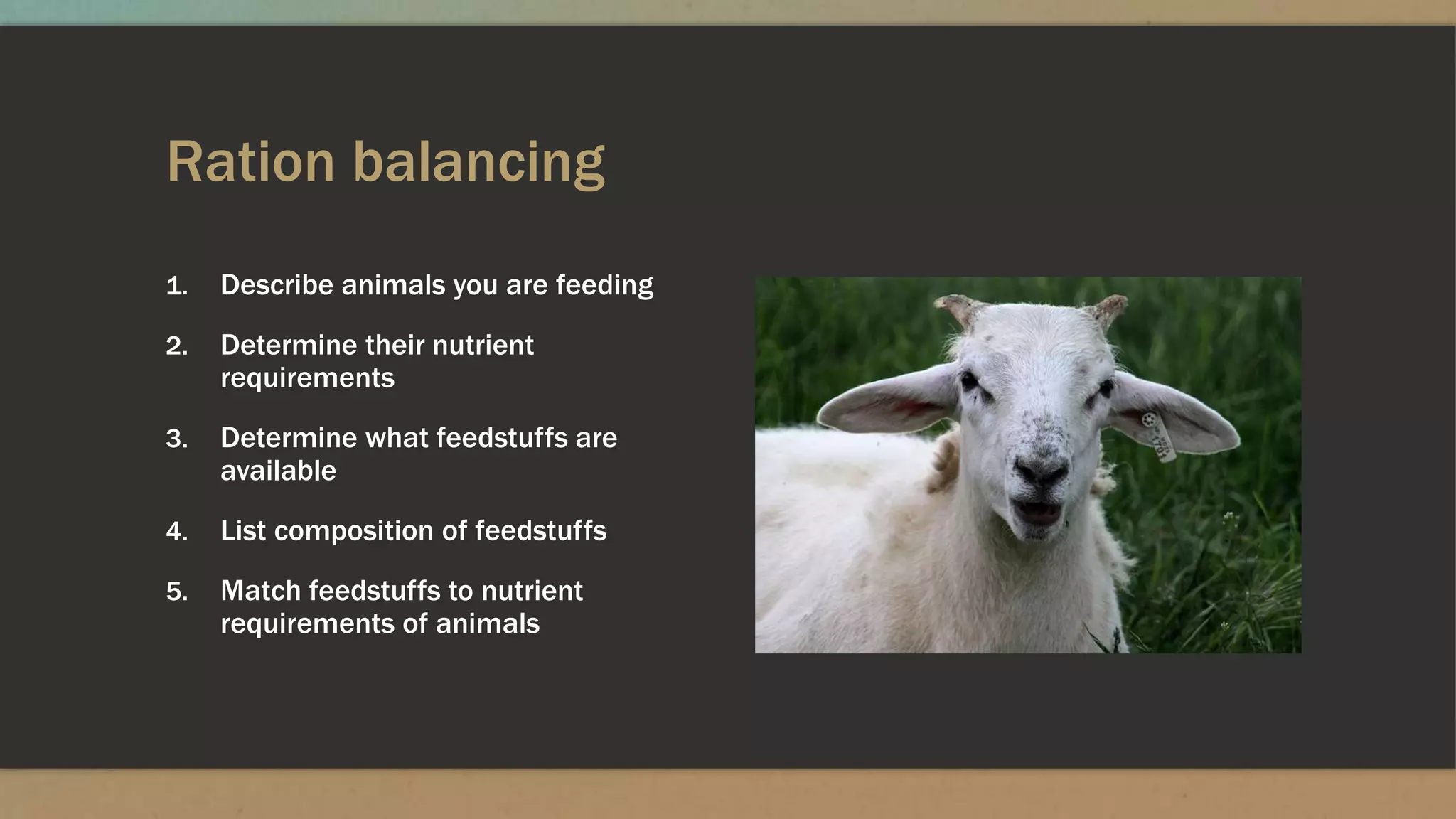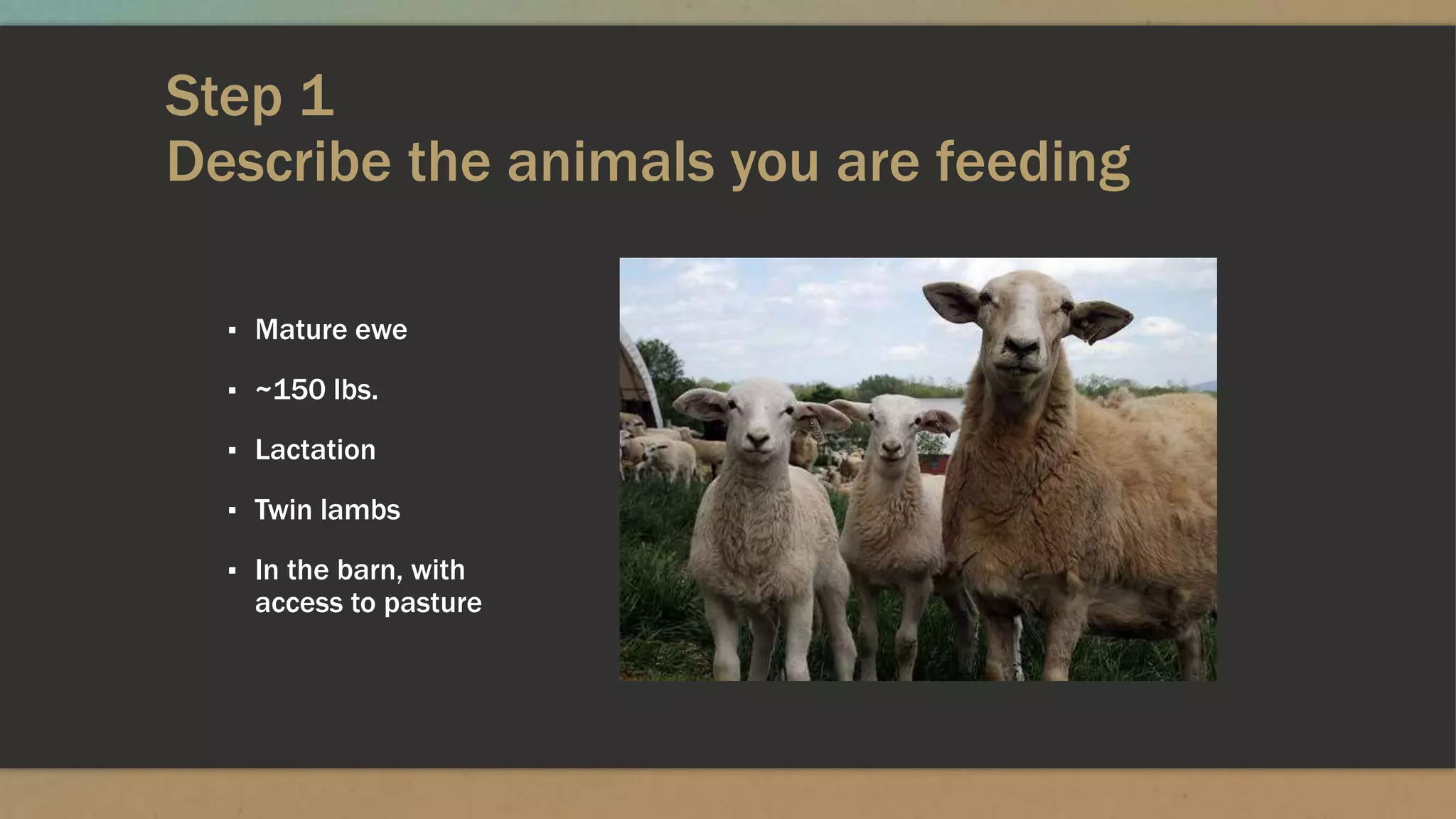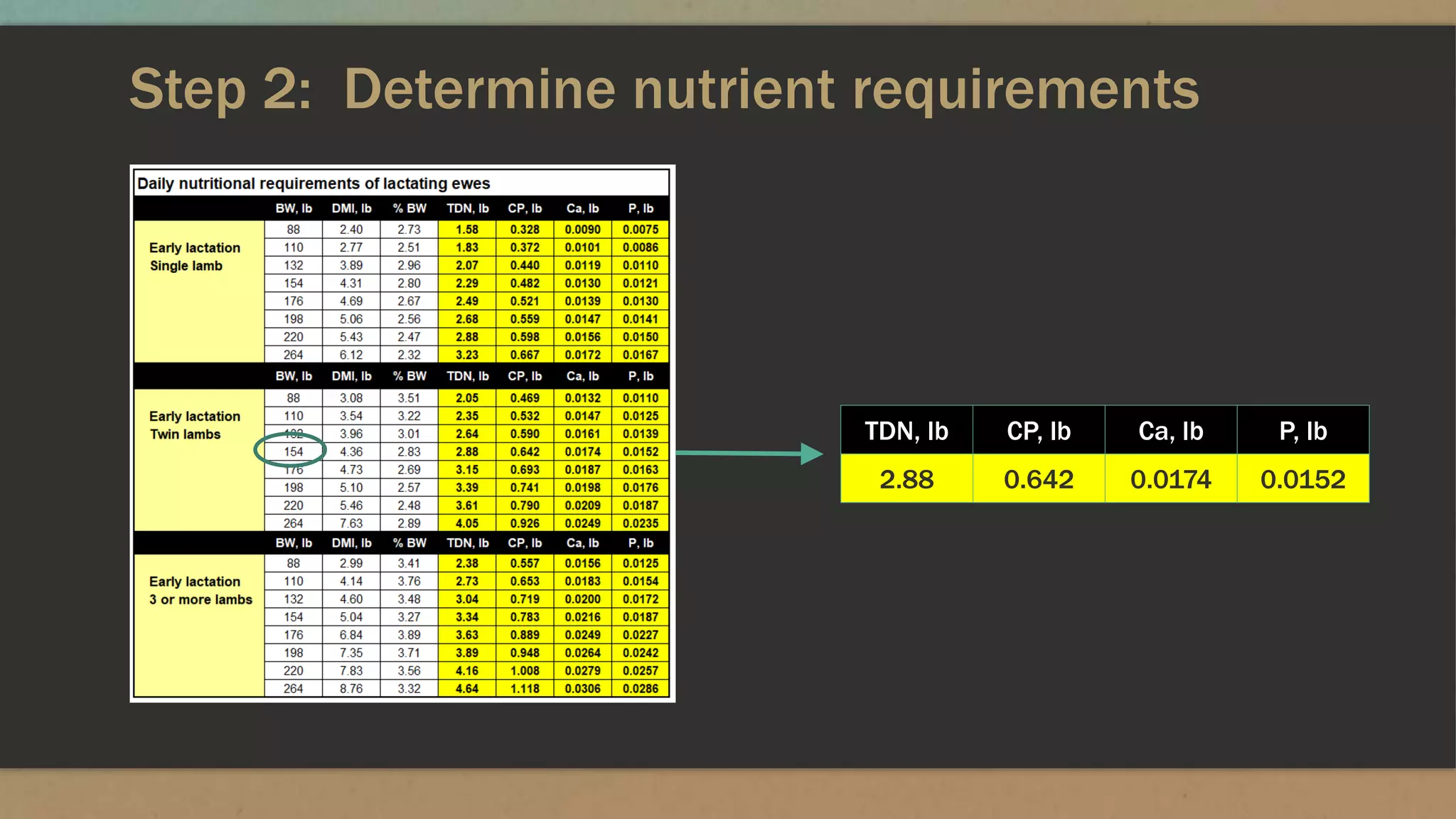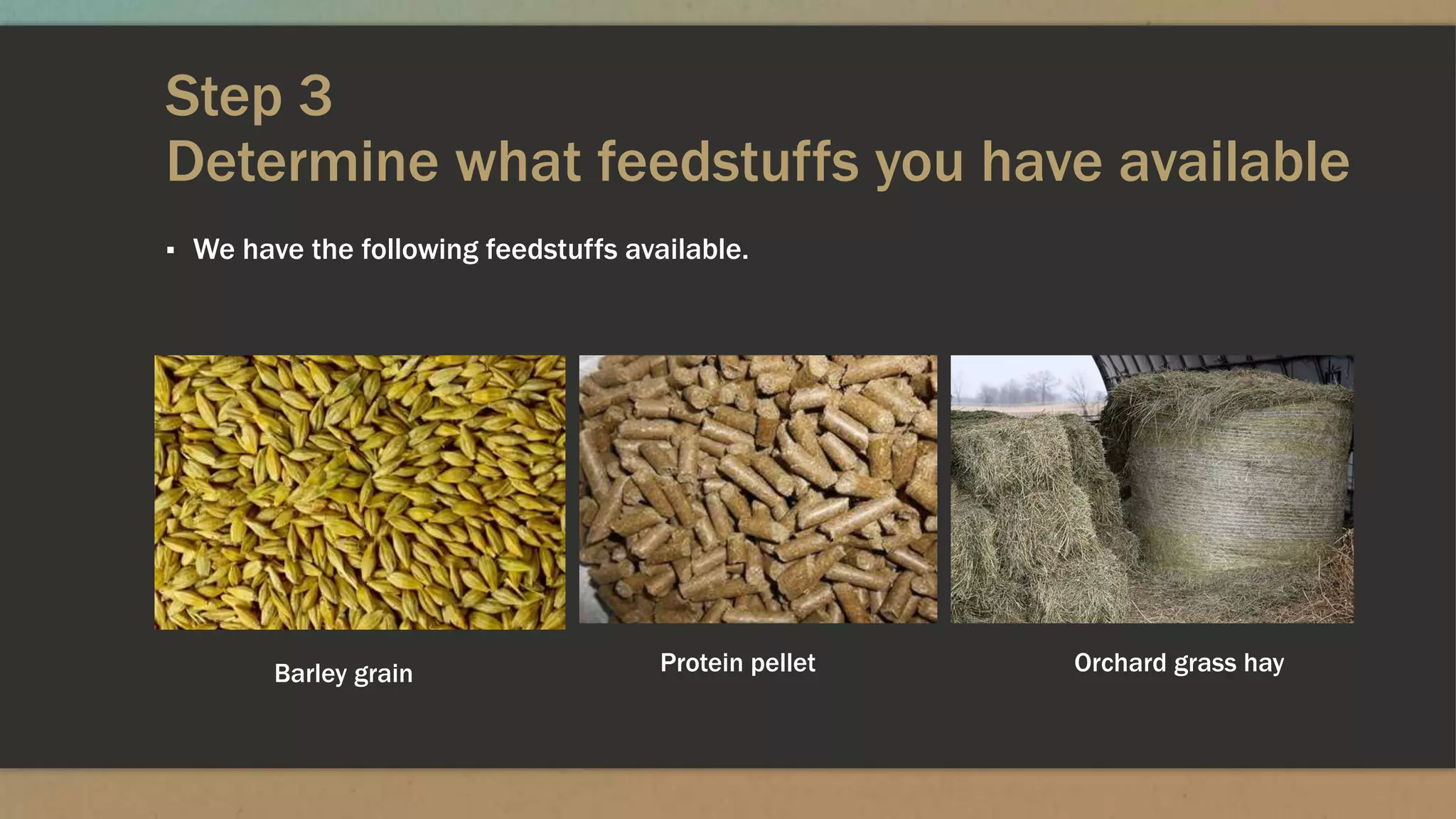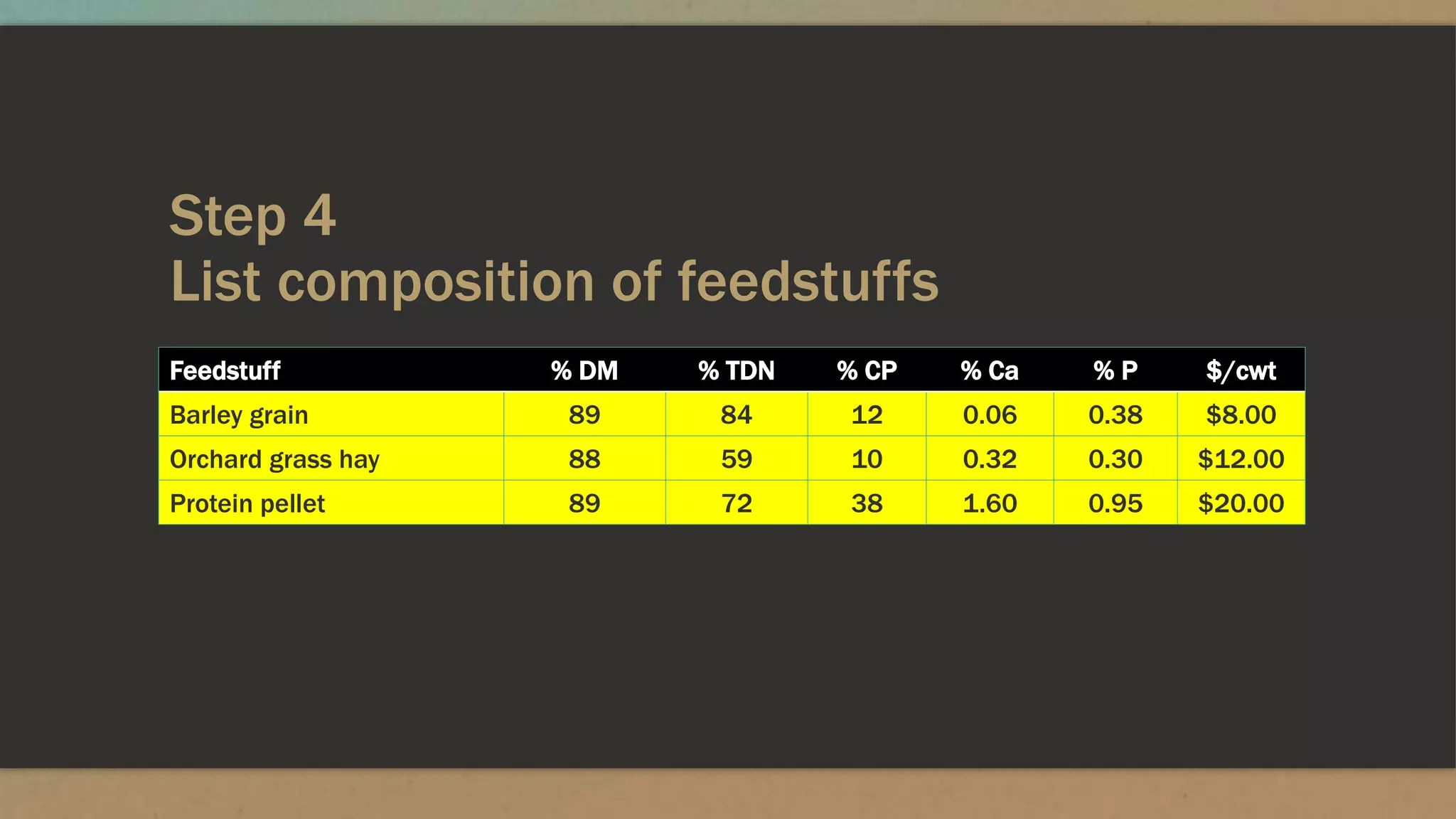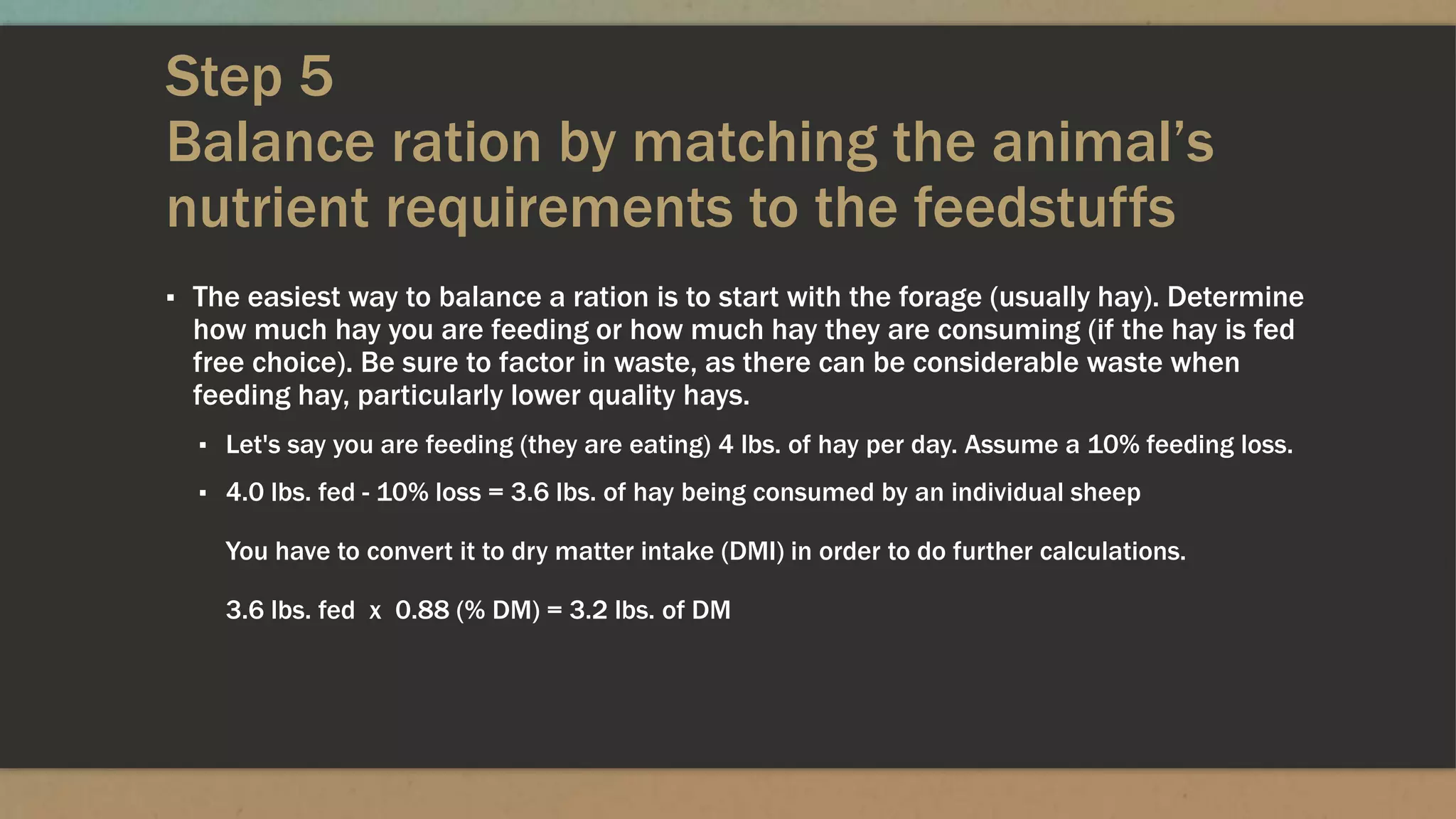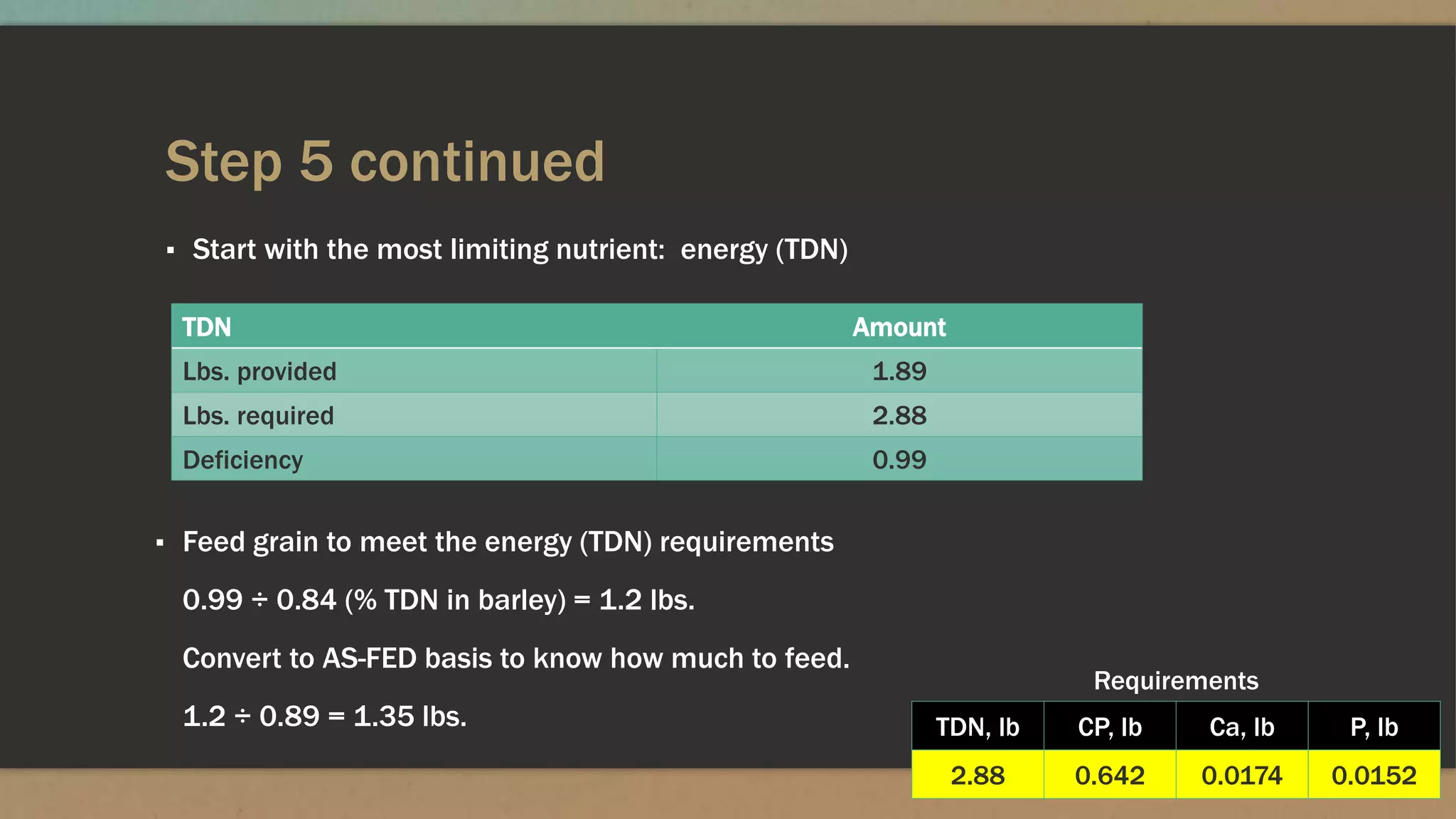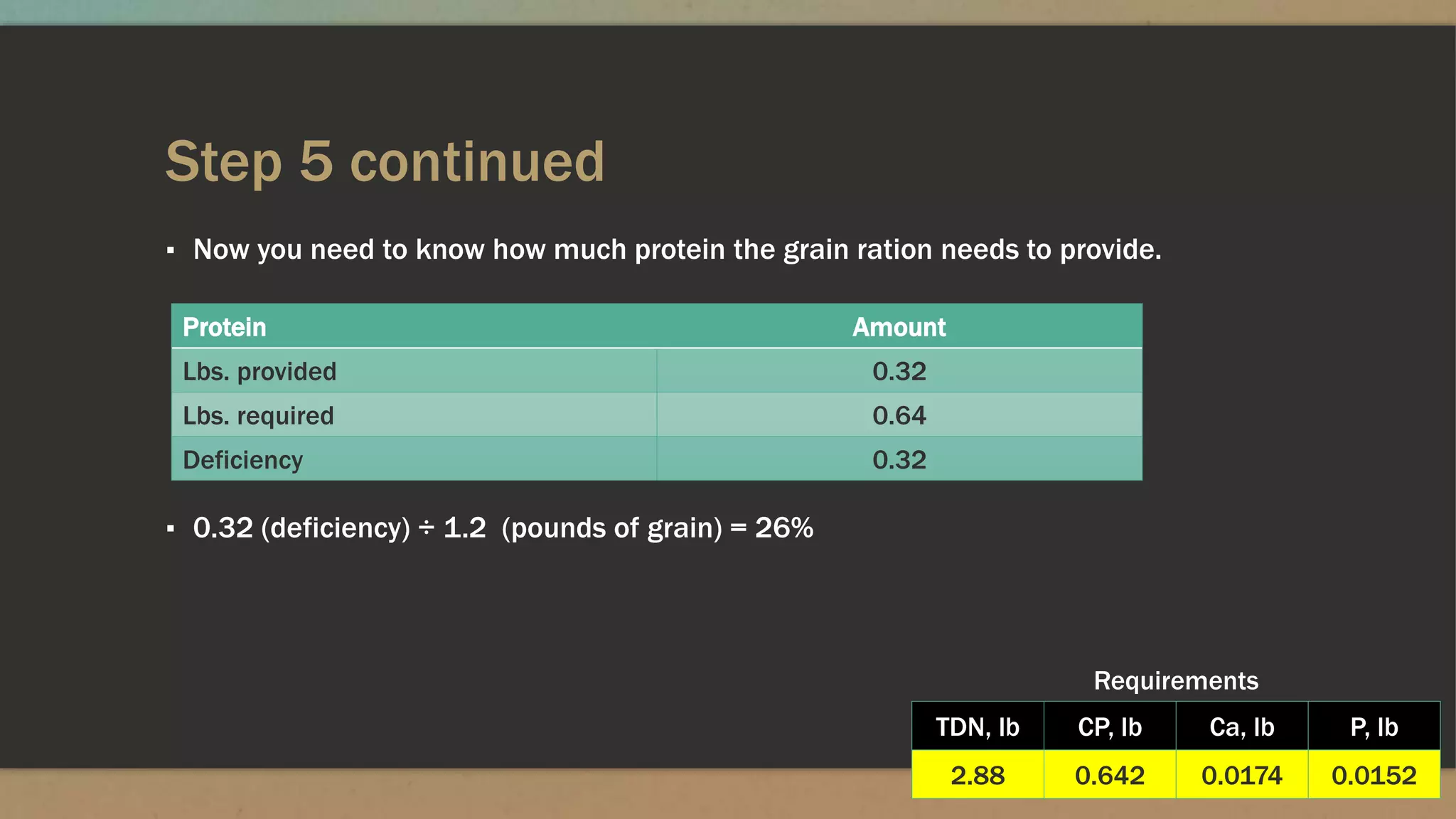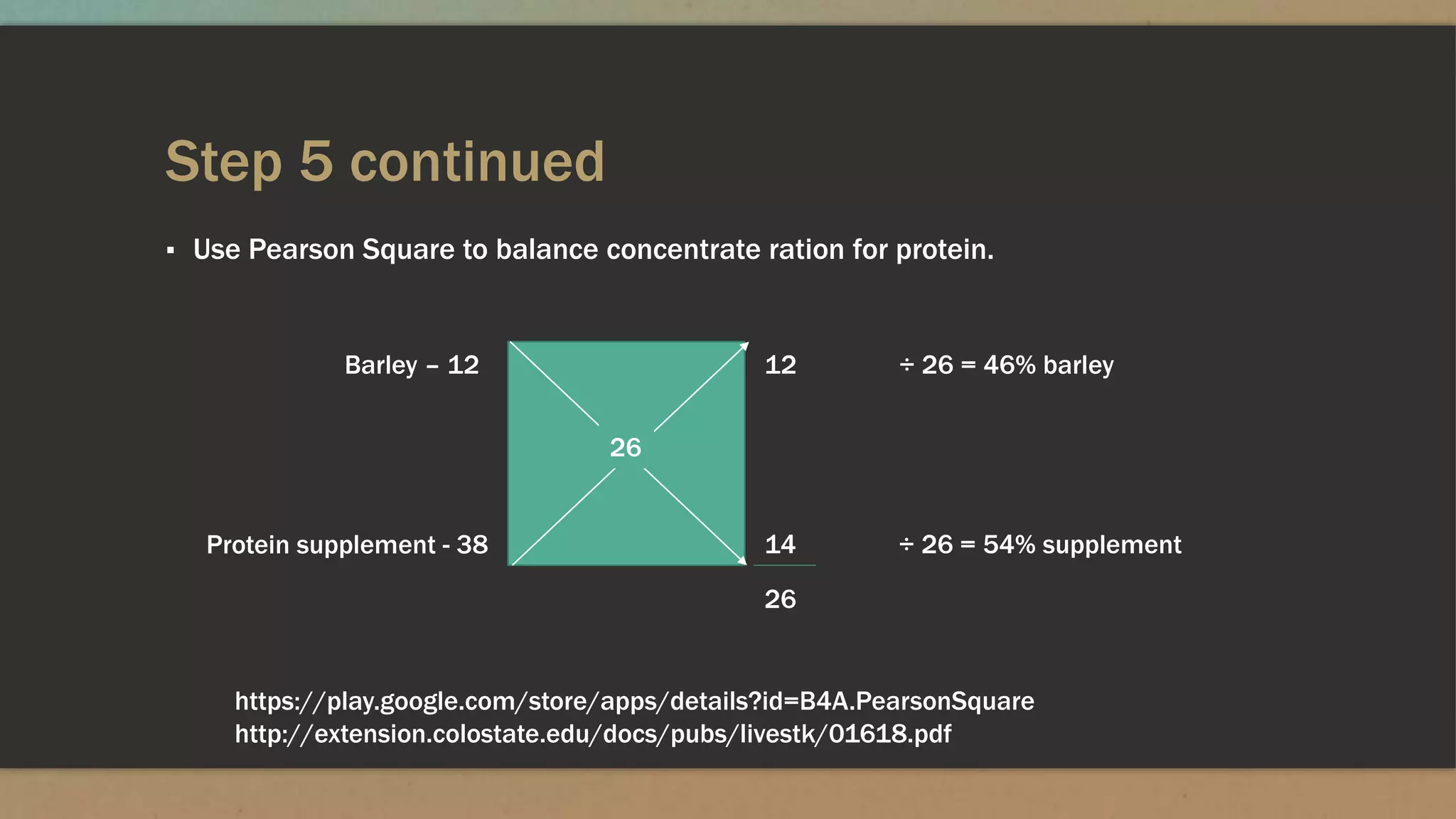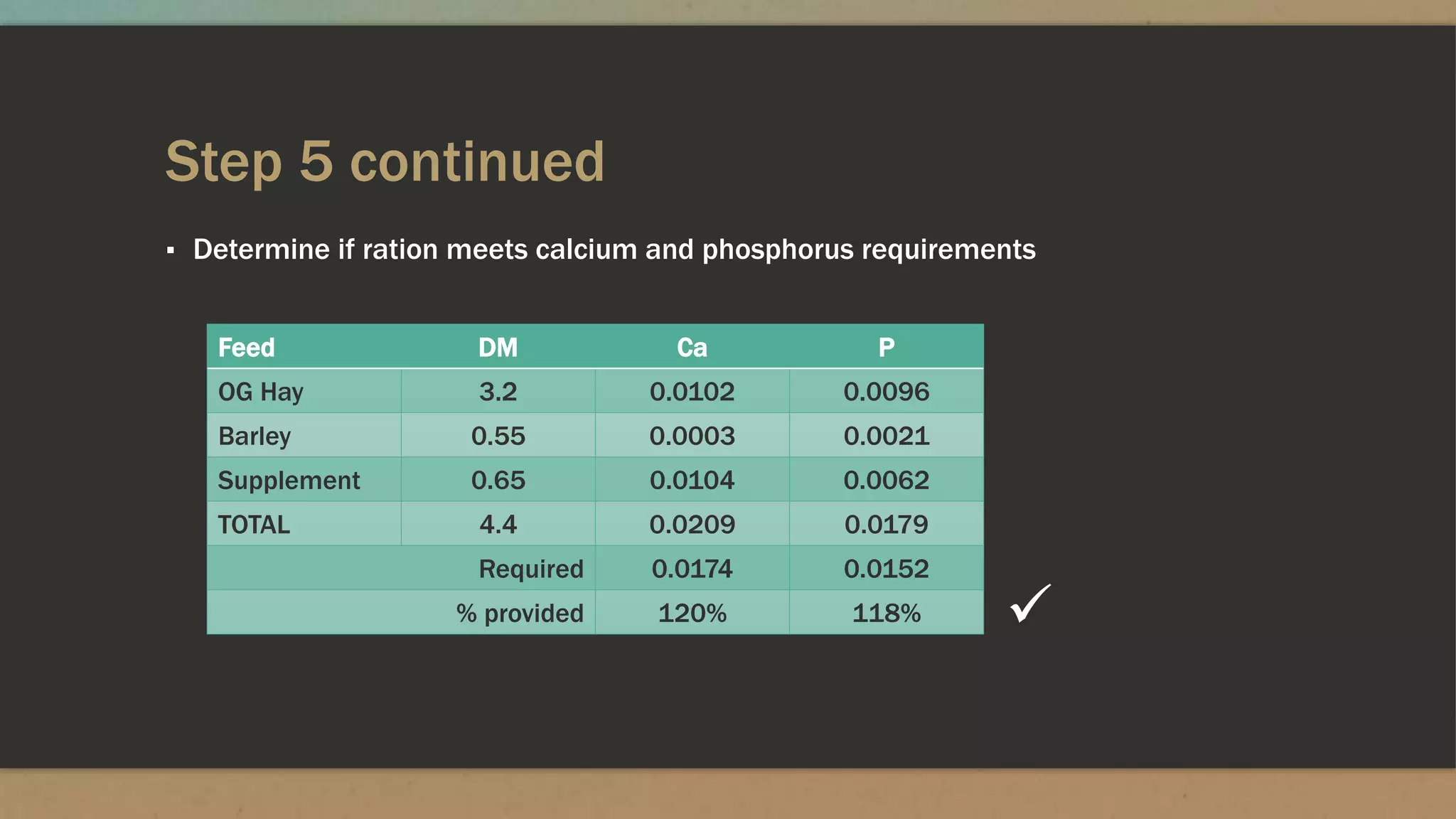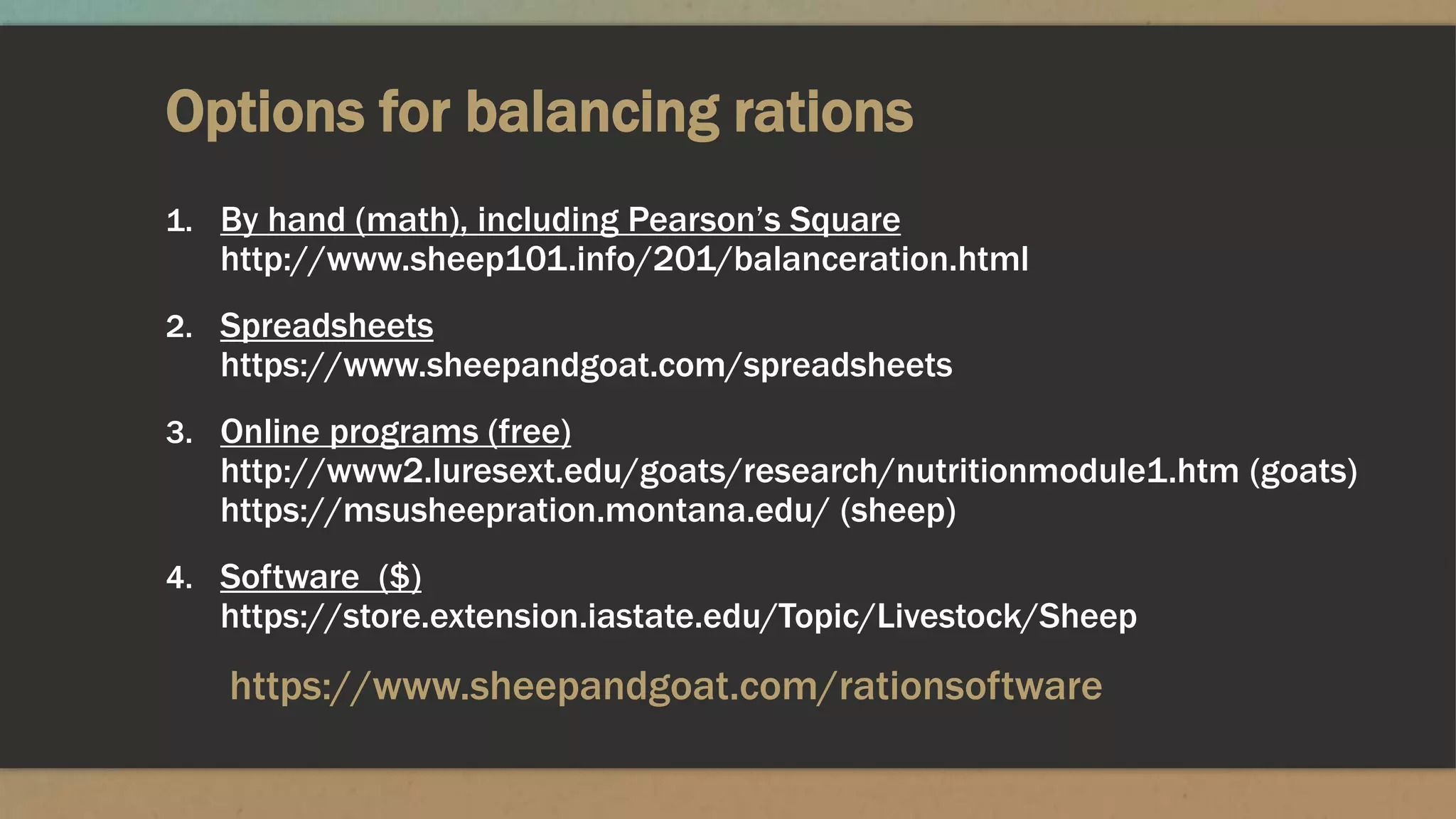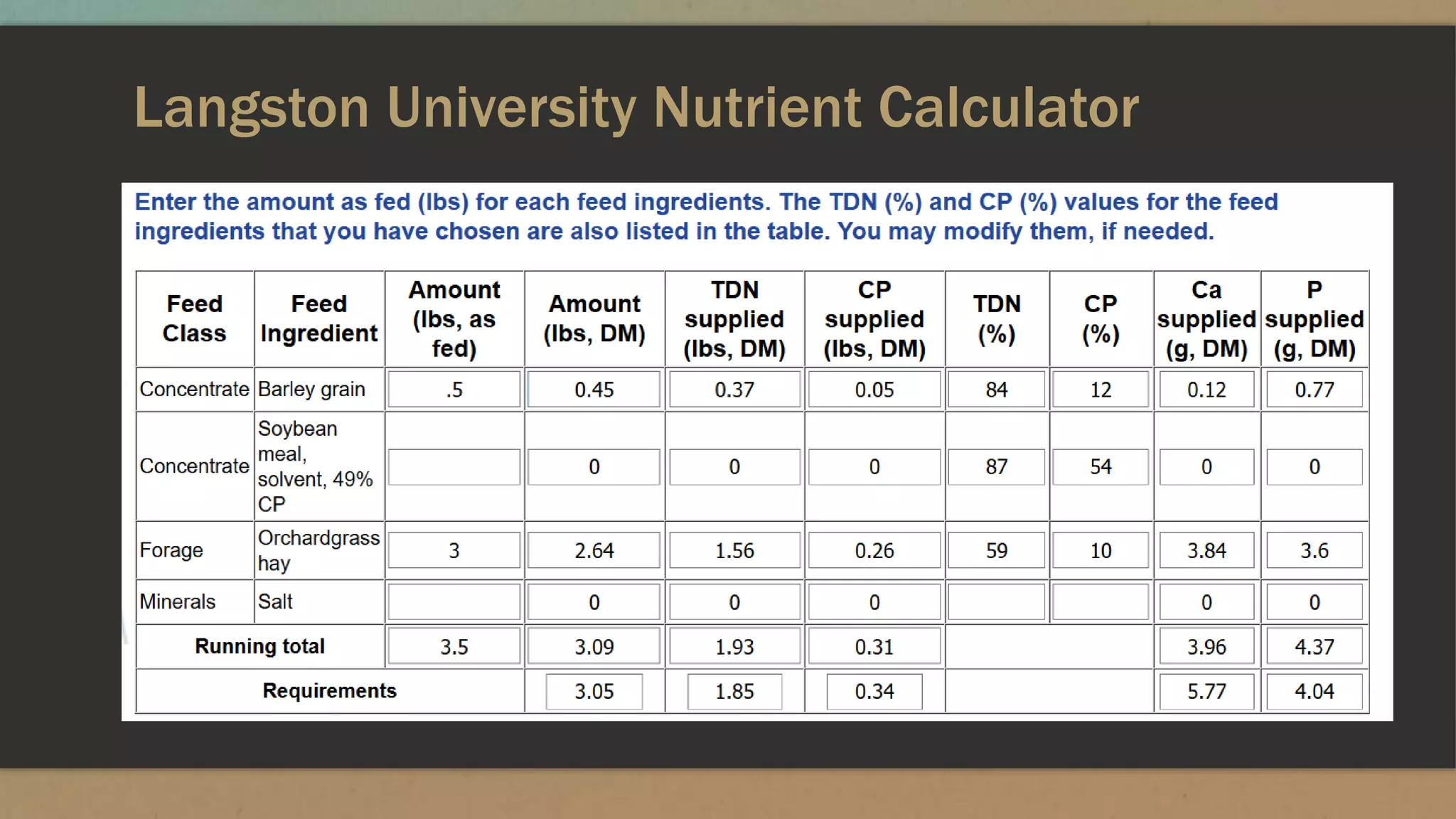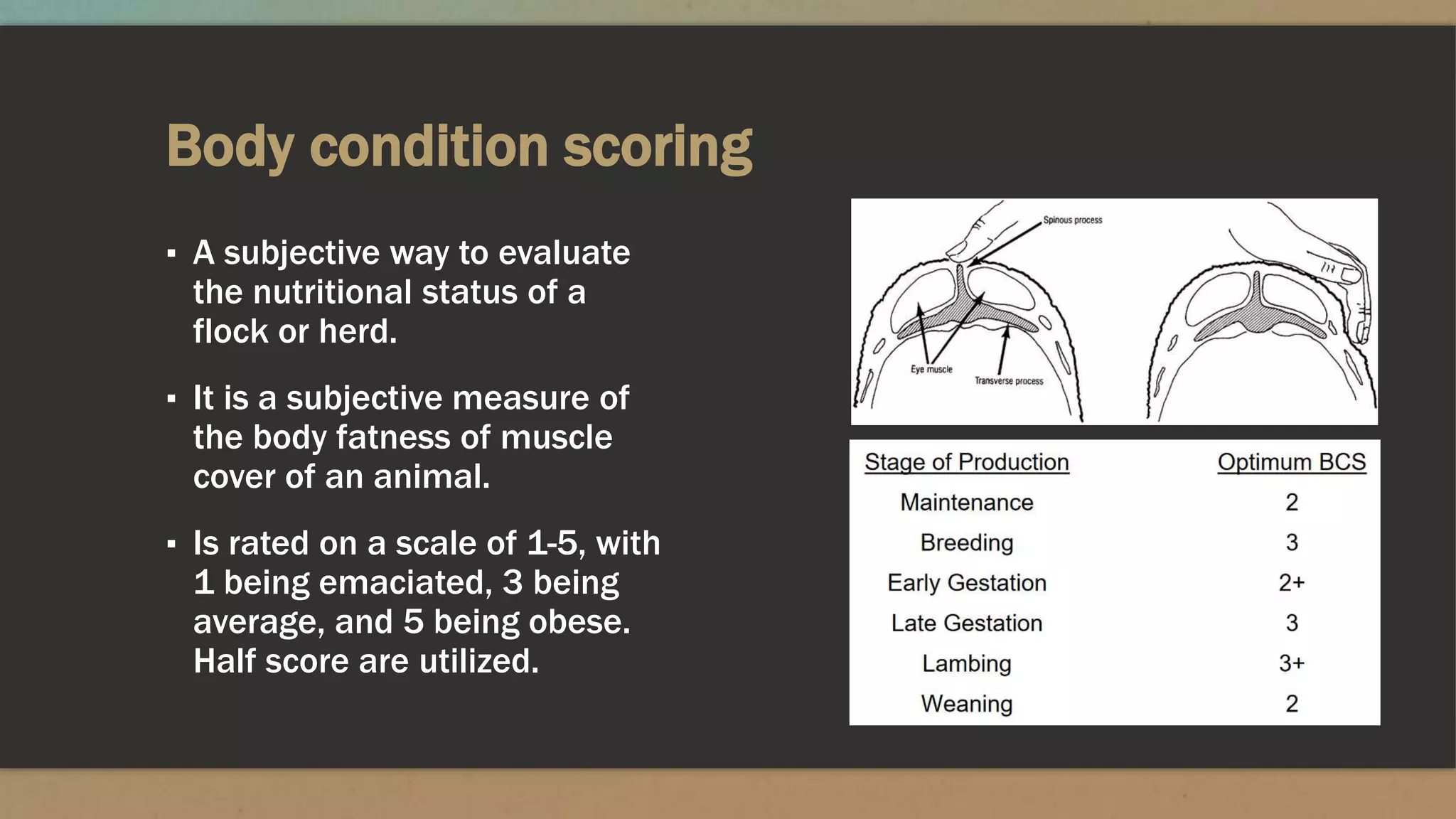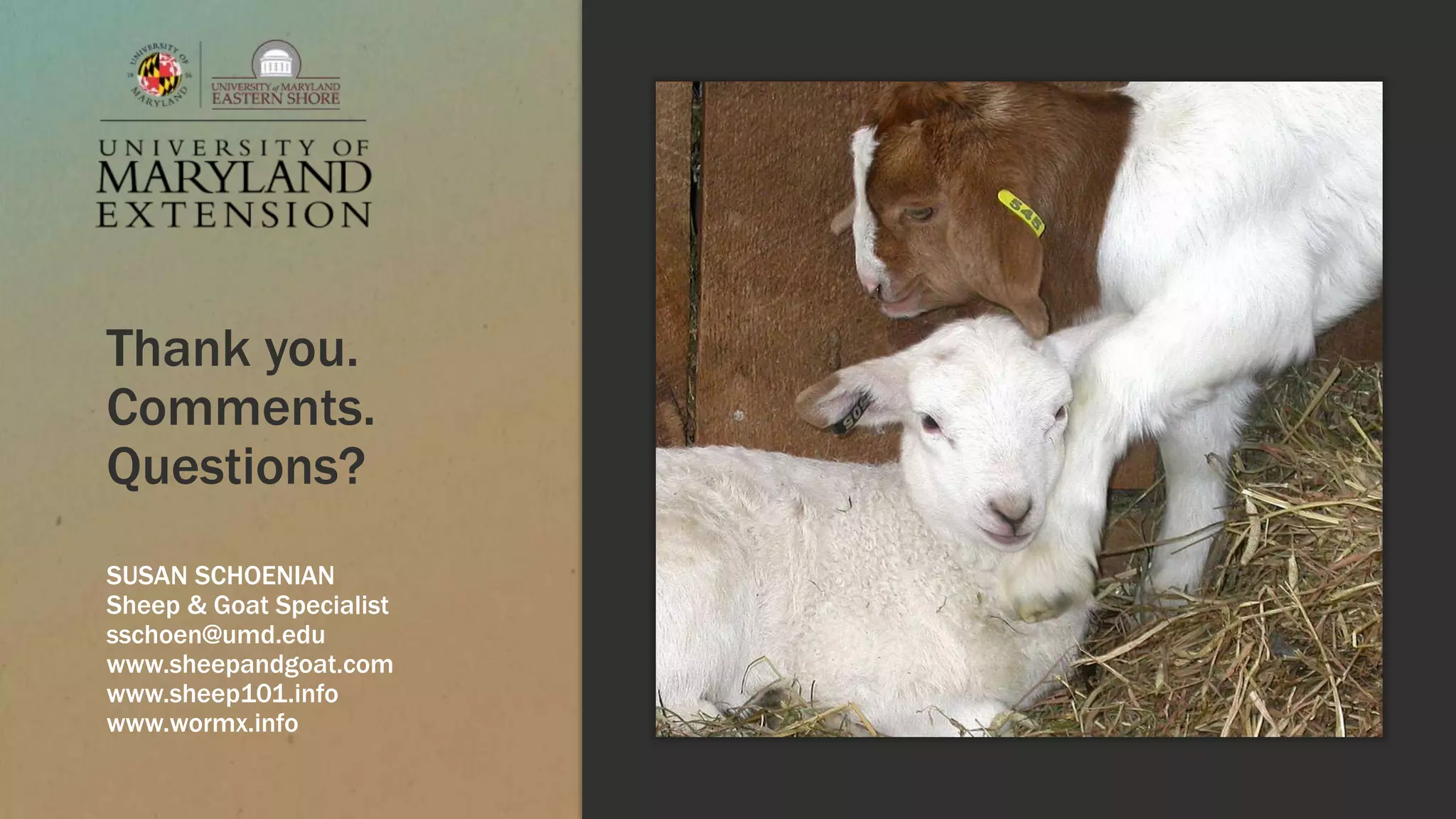This document discusses the nutrient requirements of sheep and goats. It begins by describing the ruminant digestive system and how it processes different types of feeds. It then discusses the five essential nutrients required by sheep and goats: water, energy, protein, minerals, and vitamins. For each nutrient, it provides details on sources, requirements, and factors that can affect requirements. The document emphasizes that nutrient requirements vary based on species, size, stage of production, production level, and other environmental factors. It concludes with steps for balancing rations to meet animal nutrient needs.

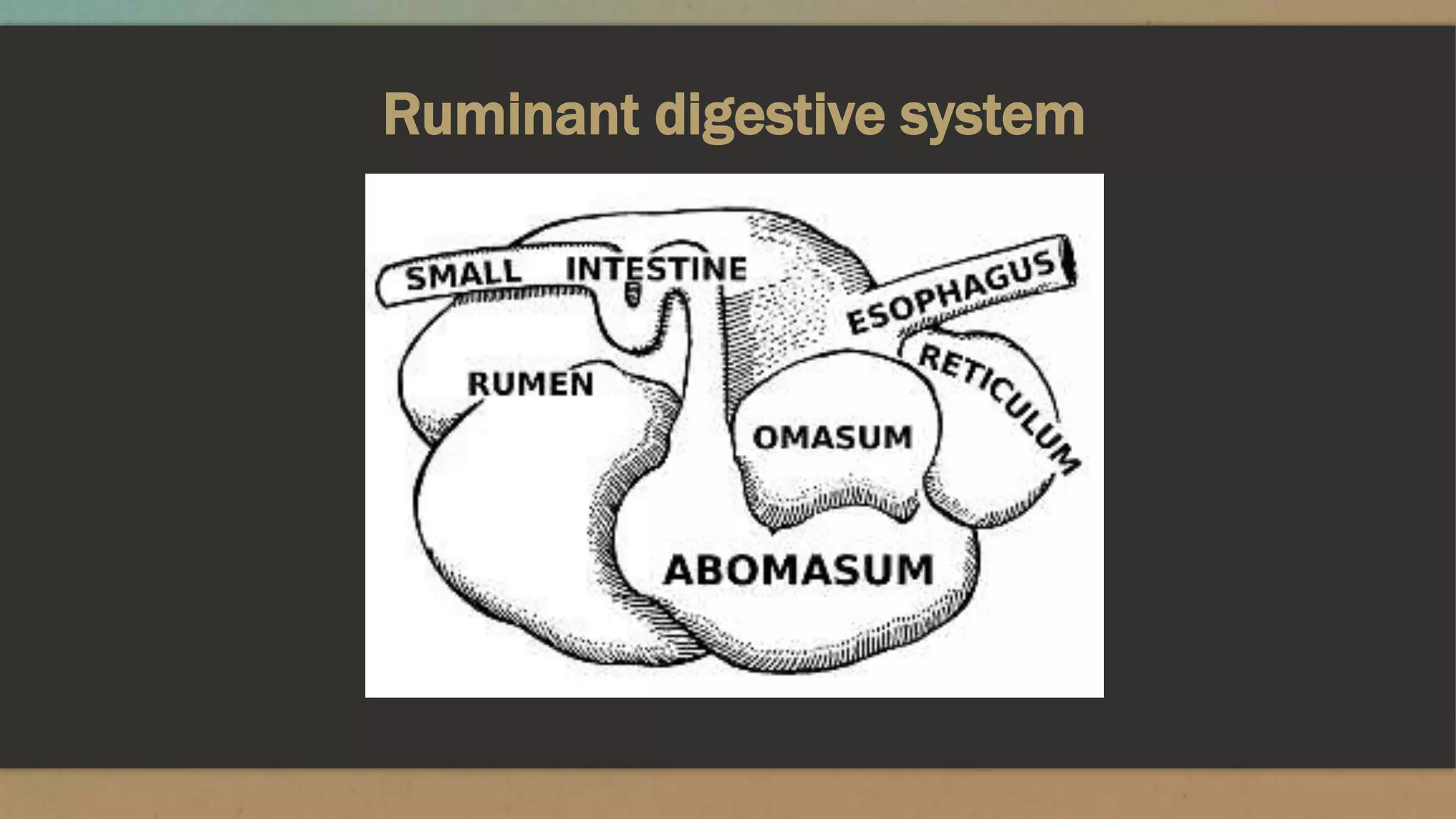
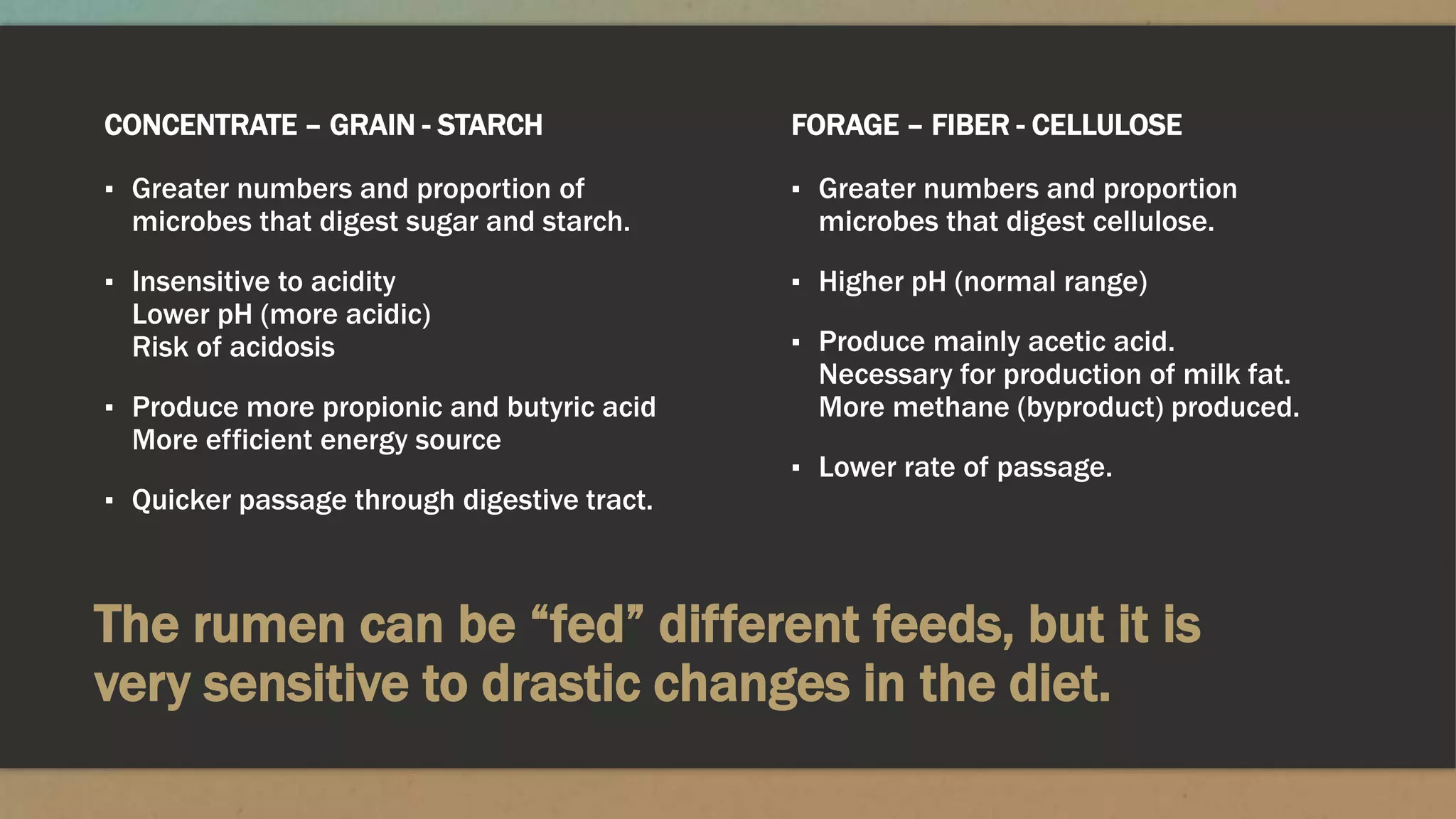
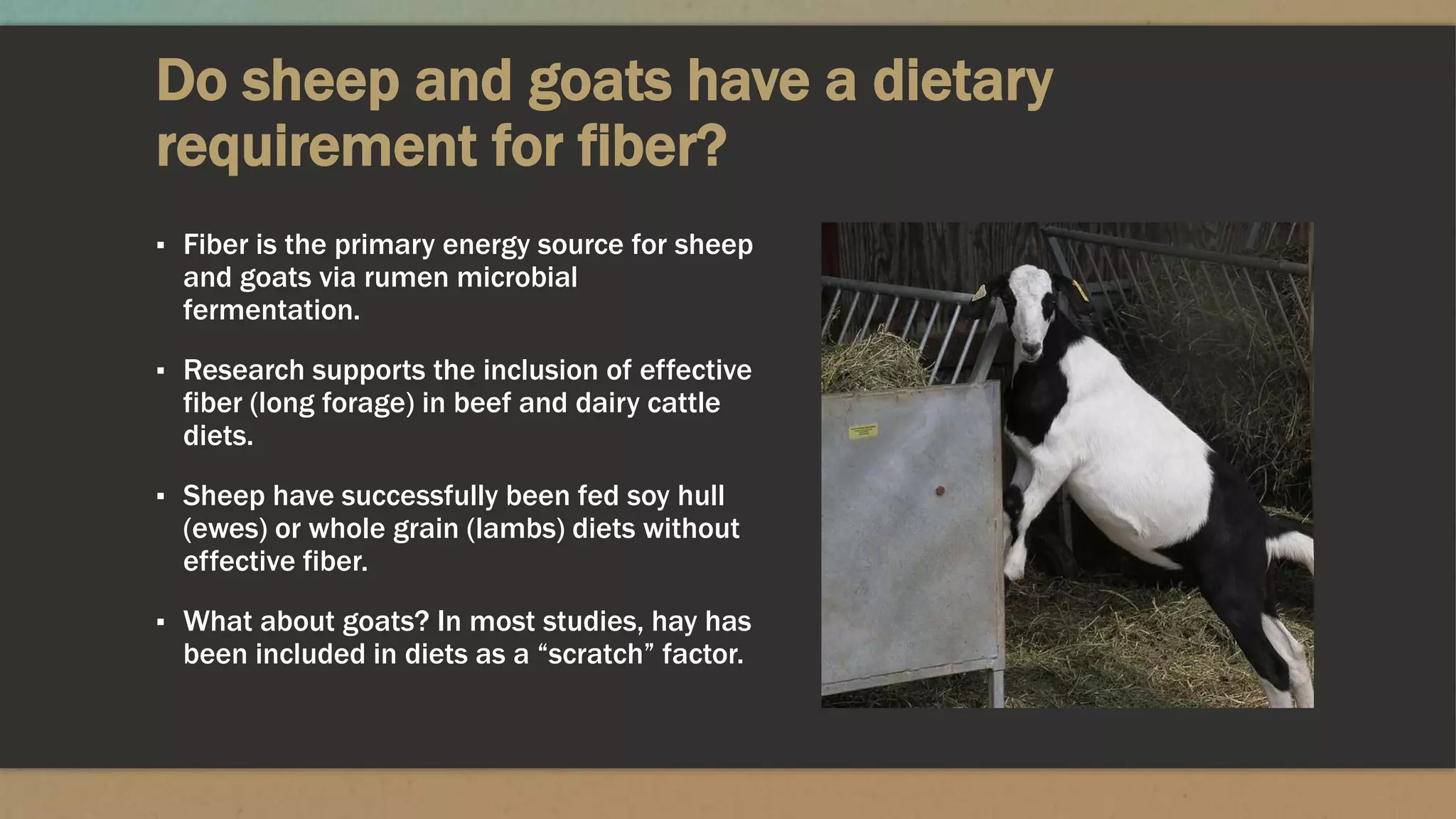
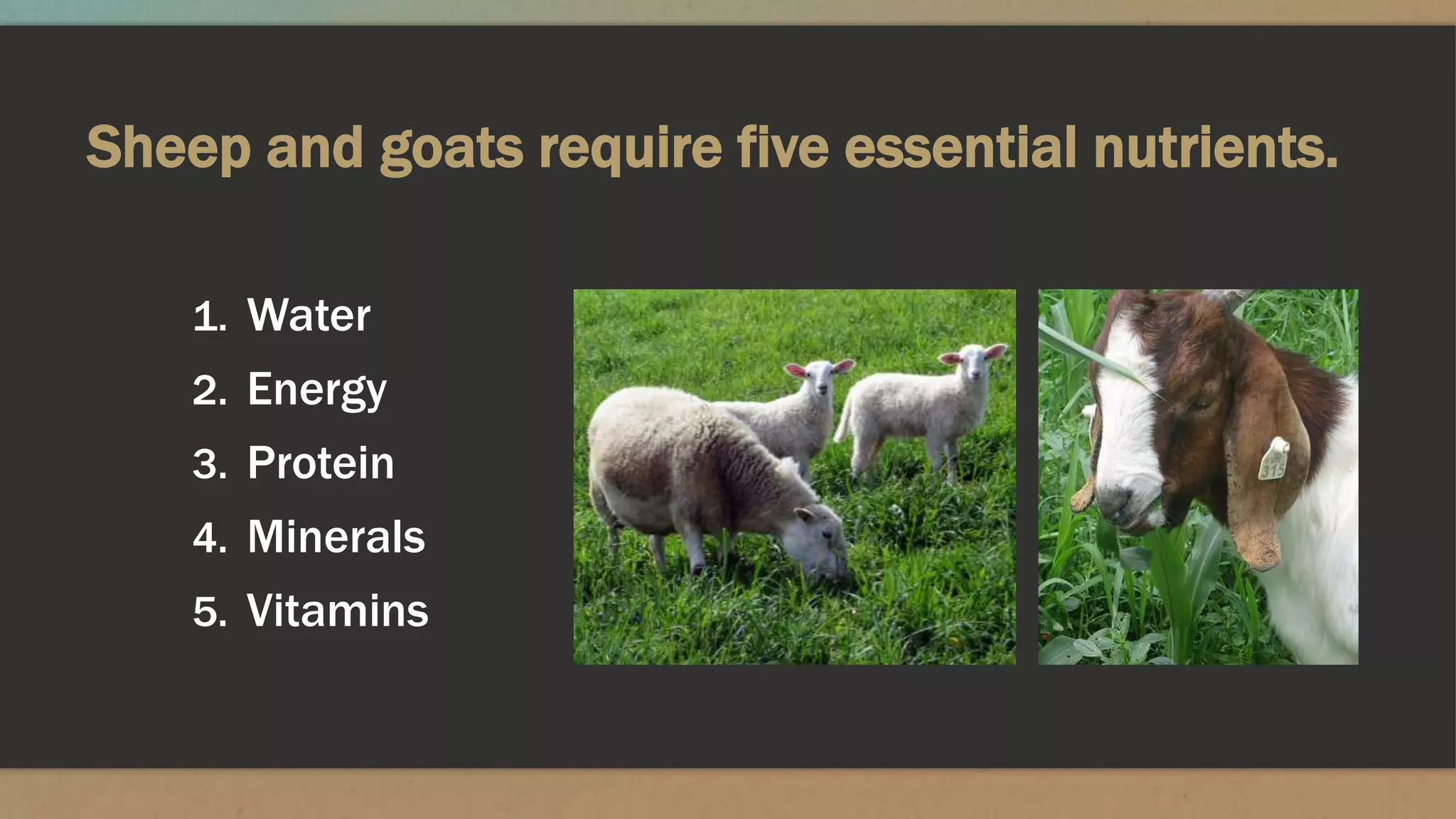
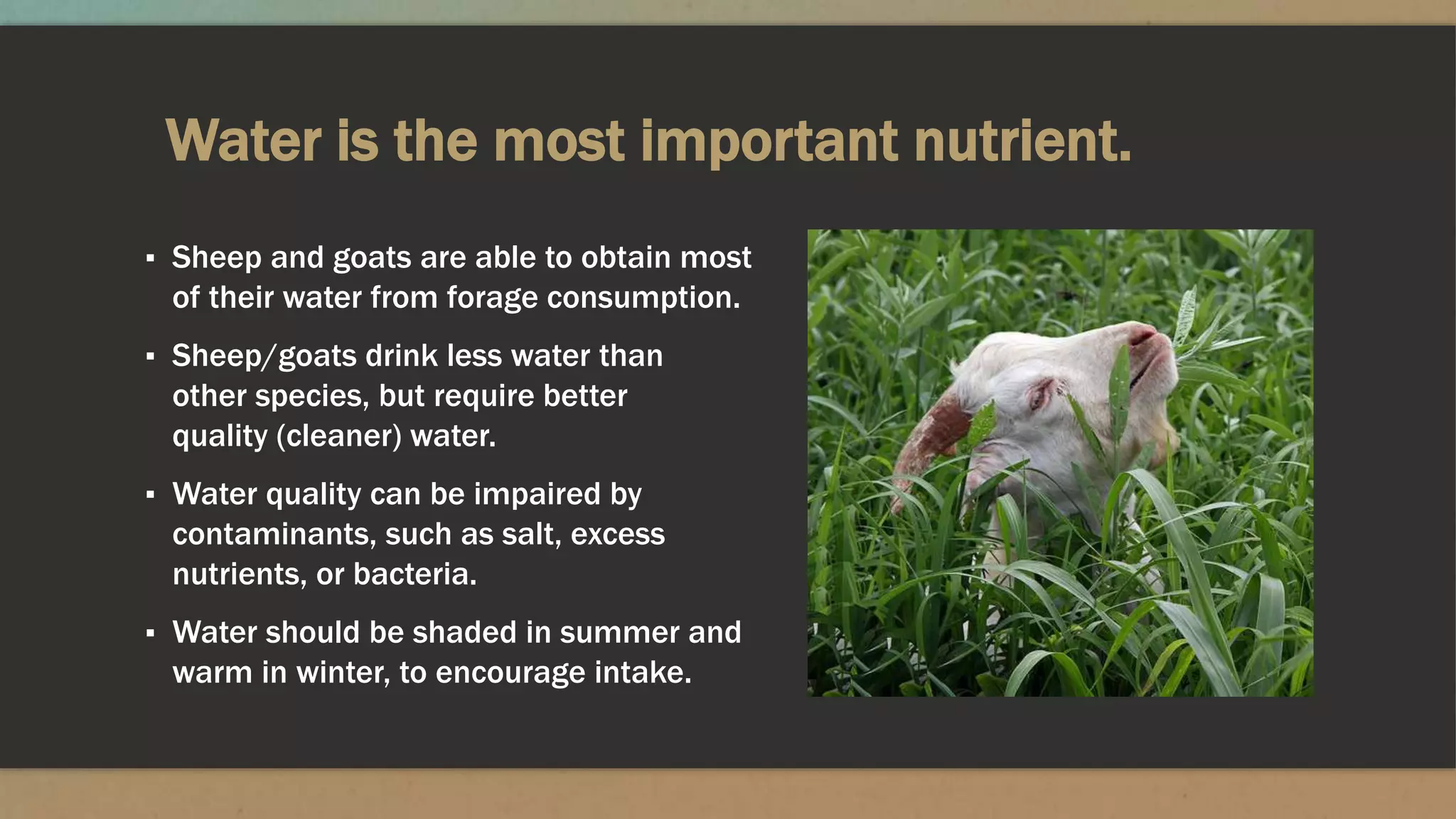
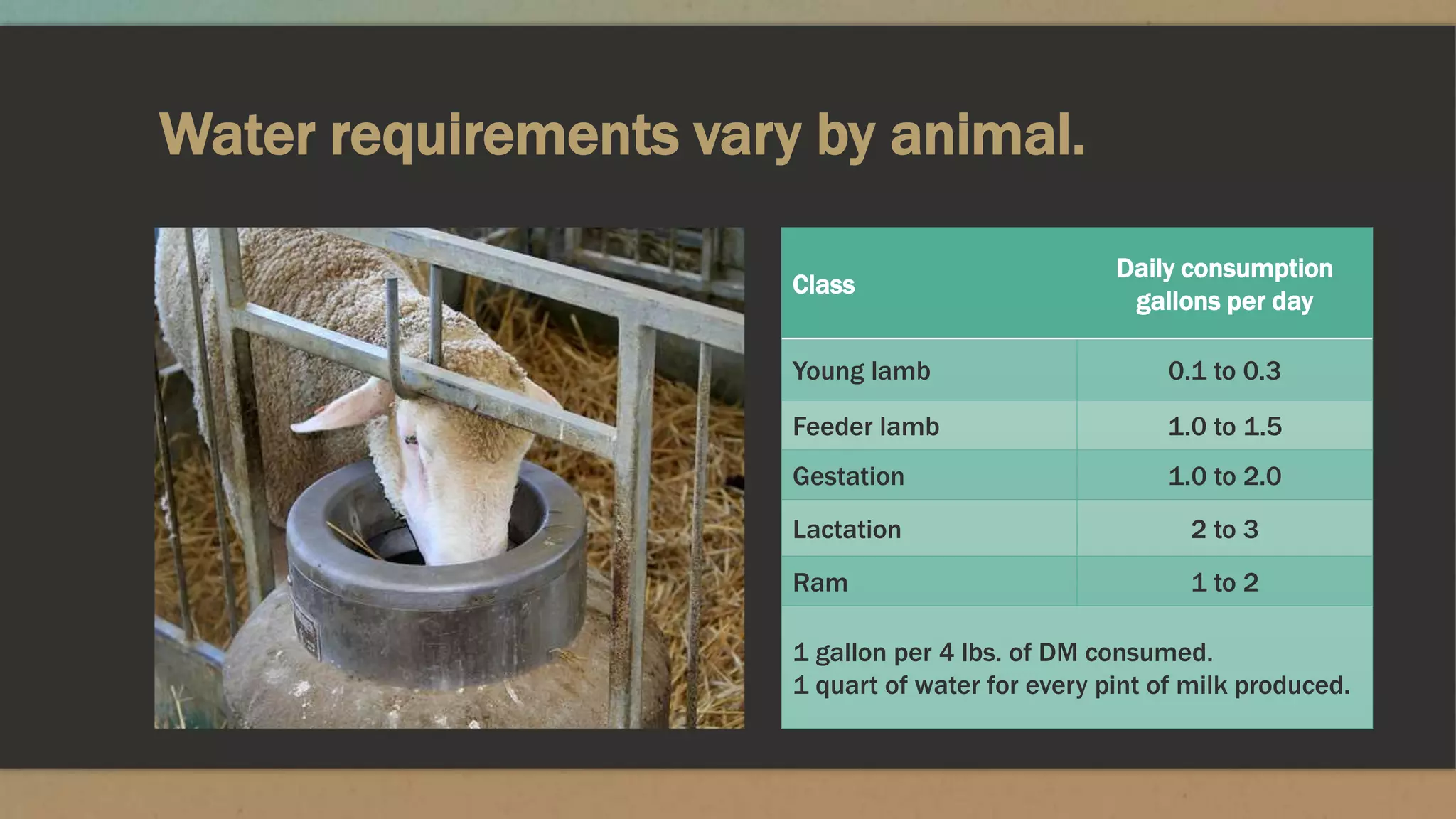
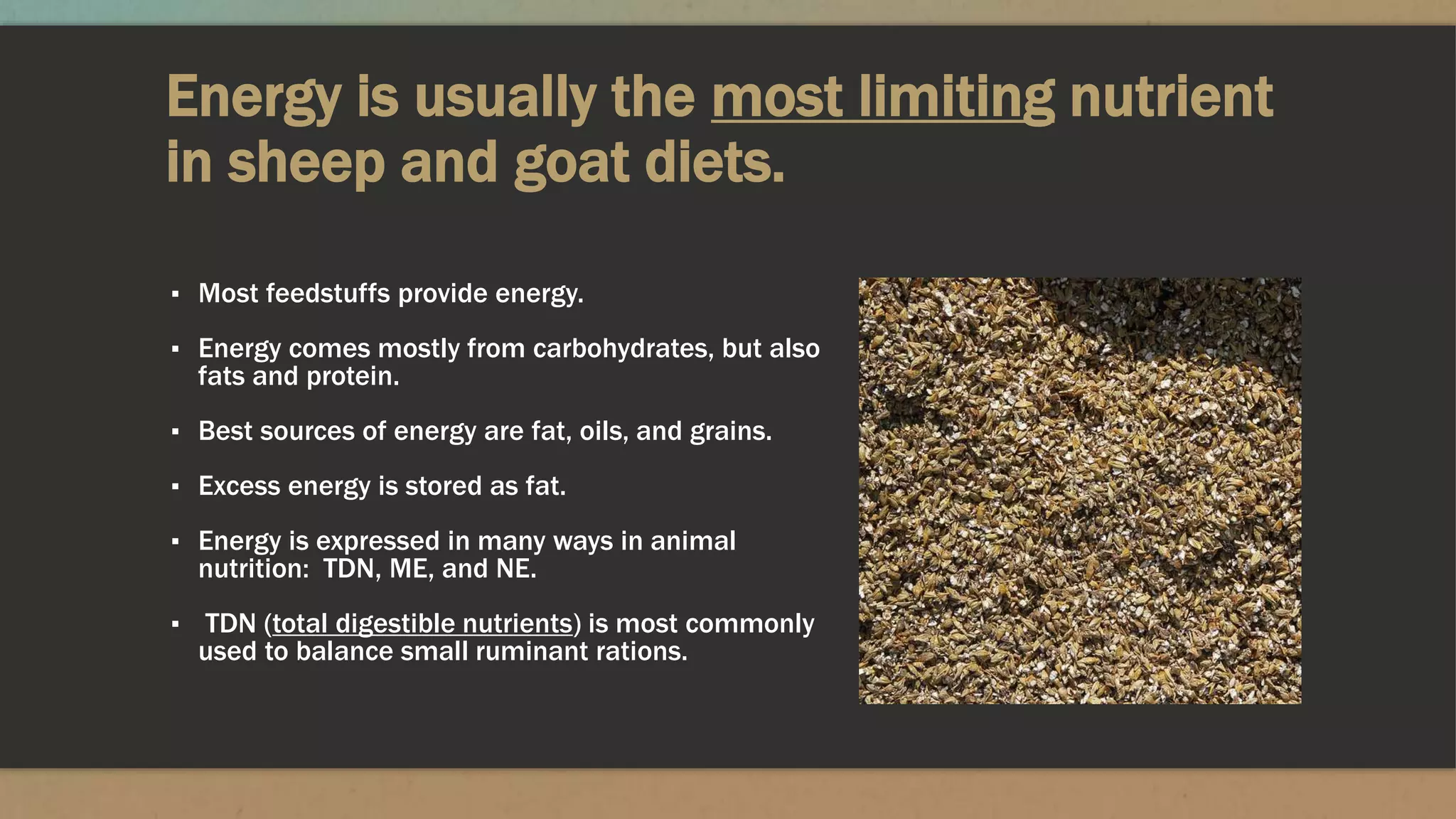


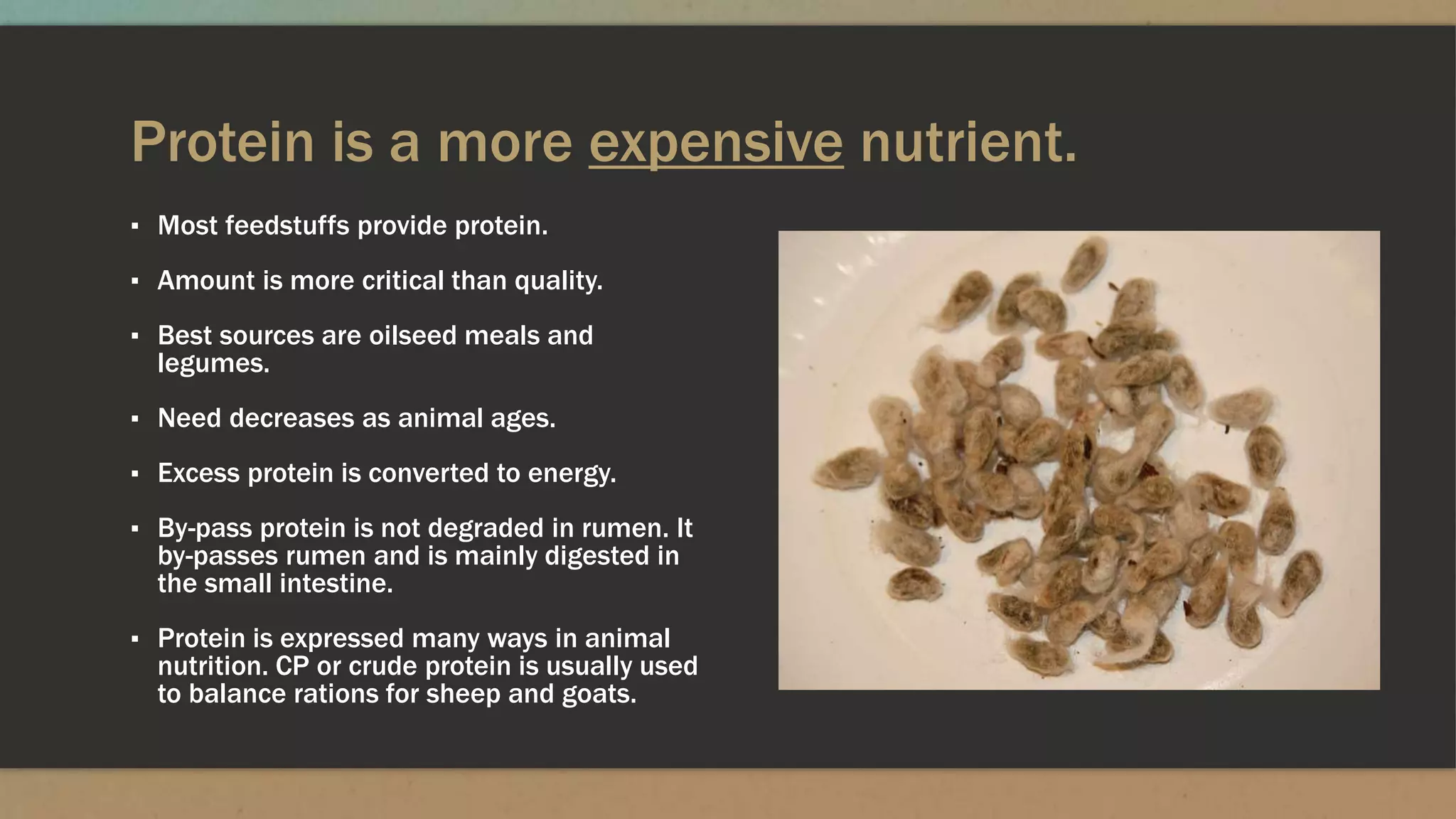
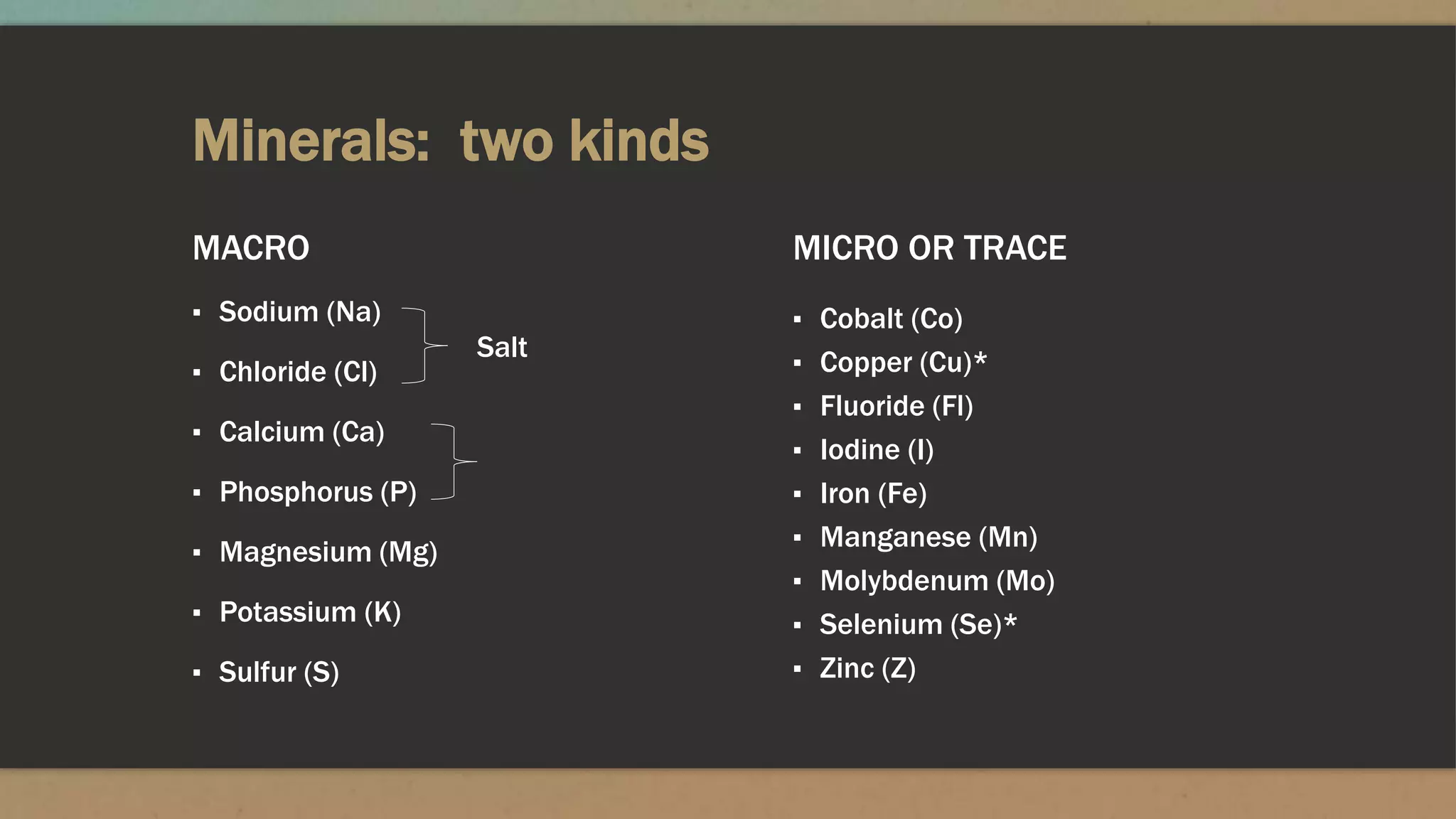

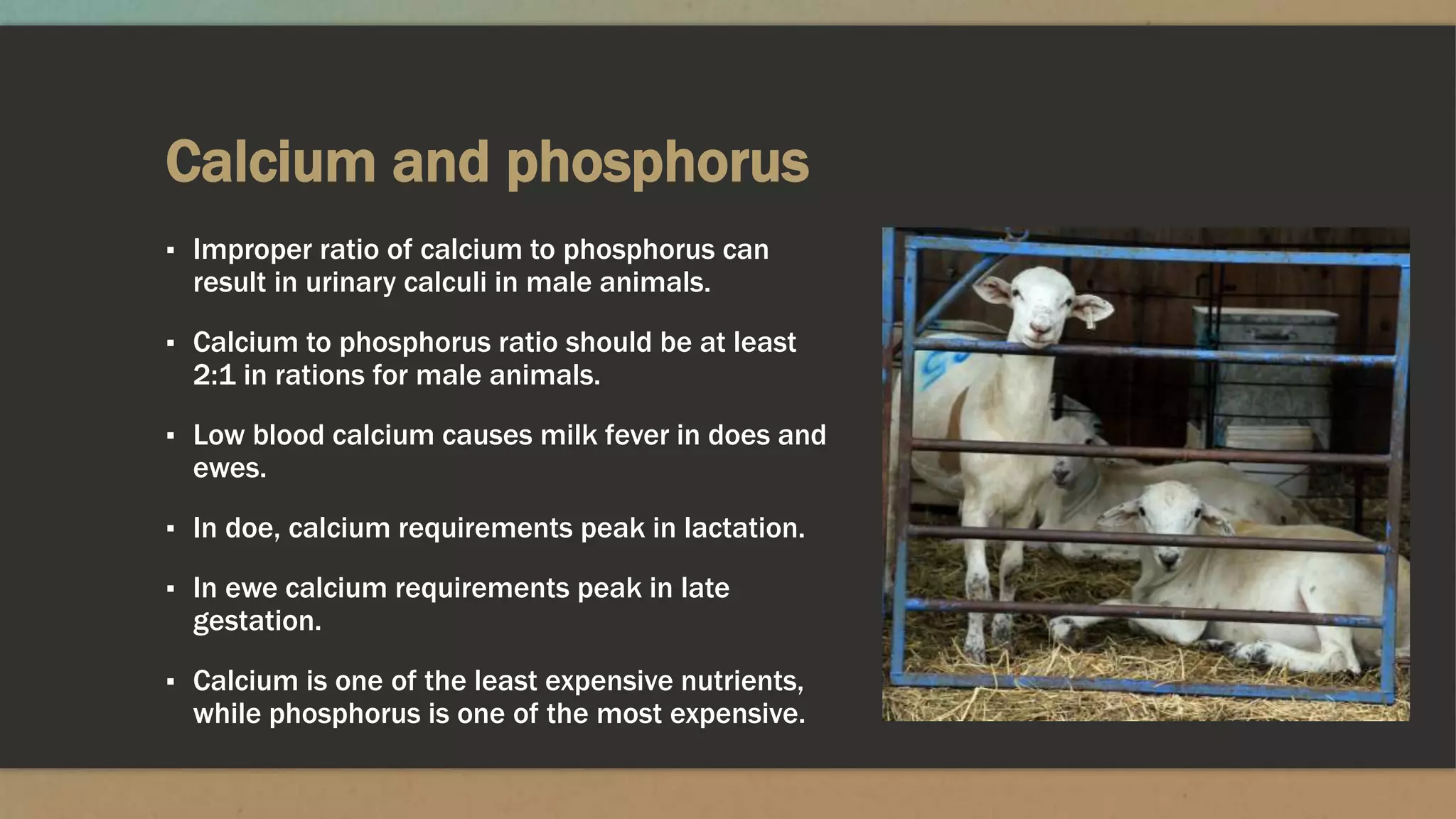
![COPPER (Cu)
▪ Copper metabolism is very
complicated.
▪ Many antagonists: molybdenum,
sulfur, zinc, and calcium.
▪ Different rates of absorption.
▪ Sheep are sensitive to too much
copper in diet.
▪ Goats have higher requirements for
copper and are less prone to toxicity.
SELENIUM (Se)
▪ Maryland soils: deficient in Se [?]
▪ White muscle disease occurs in
lambs/kids born to selenium deficient
dams.
▪ Sub-clinical deficiencies of selenium
are not easily determined.
▪ Oral administration of selenium is
recommended over injections.
▪ Narrow margin between Se toxicity
and deficiency.
Concentration of minerals in liver can be used to determine mineral status in animals.](https://image.slidesharecdn.com/nutrientrequirementsofsheepandgoats-171113164903/75/Nutrient-requirements-of-sheep-and-goats-15-2048.jpg)
